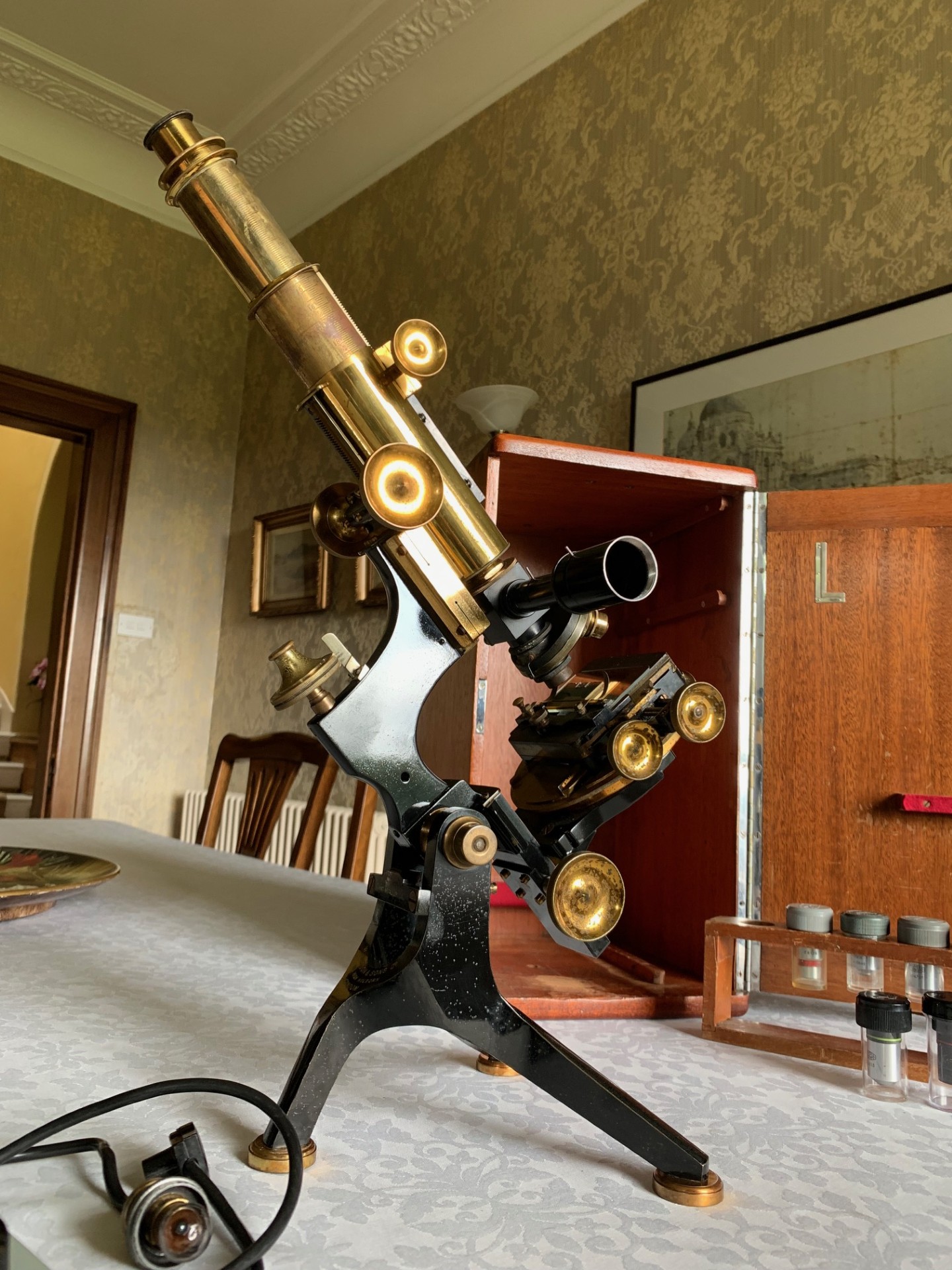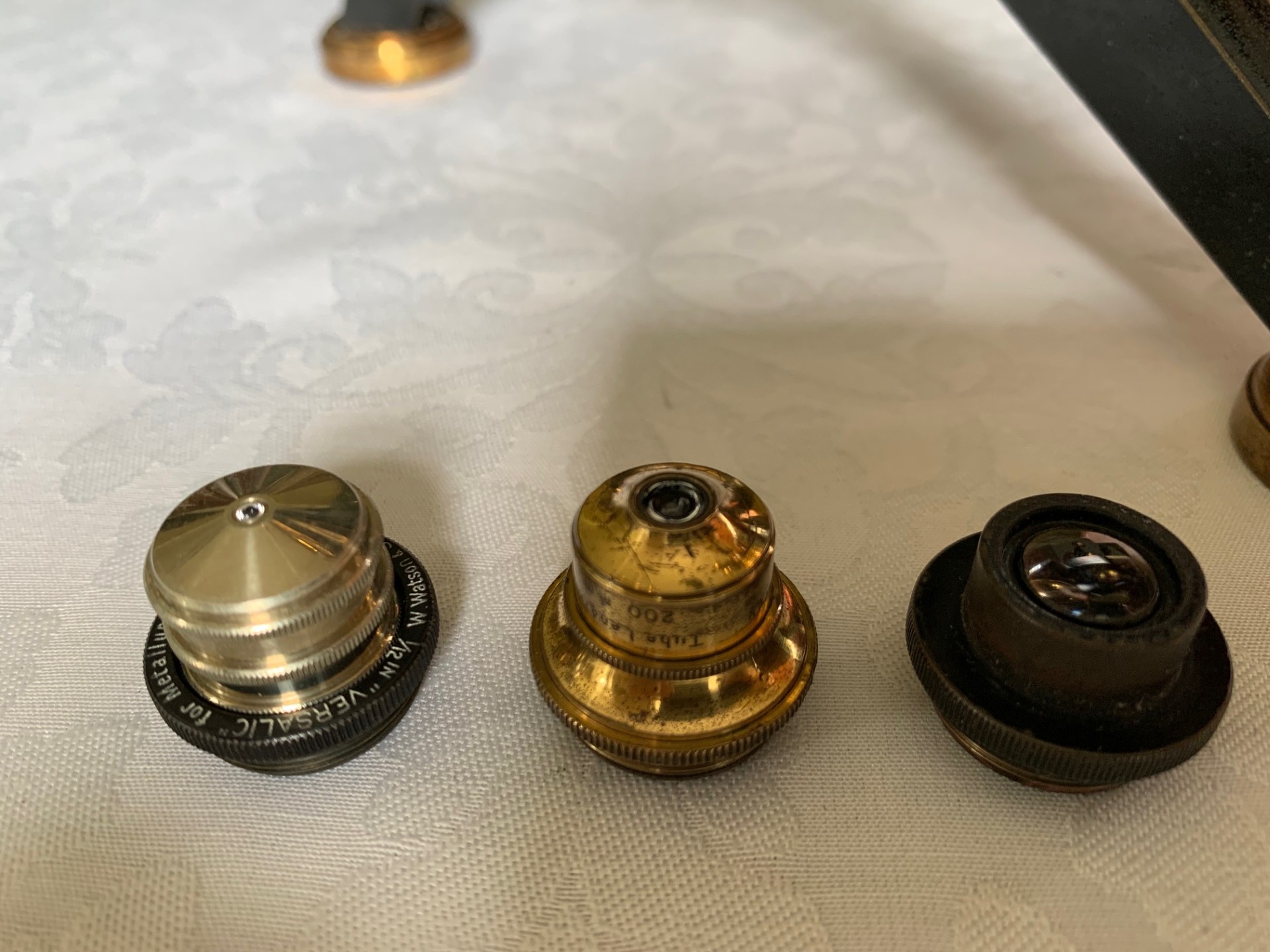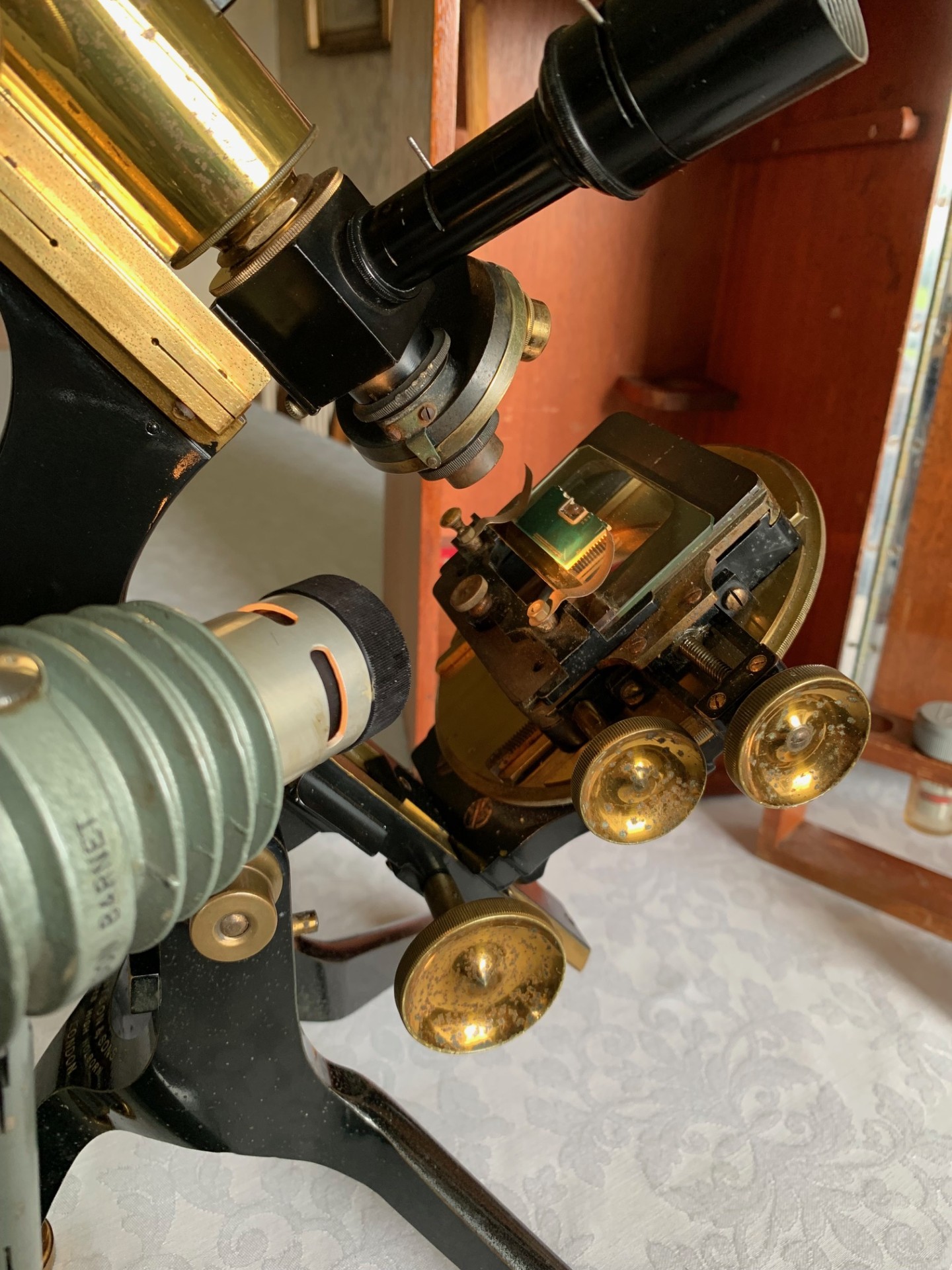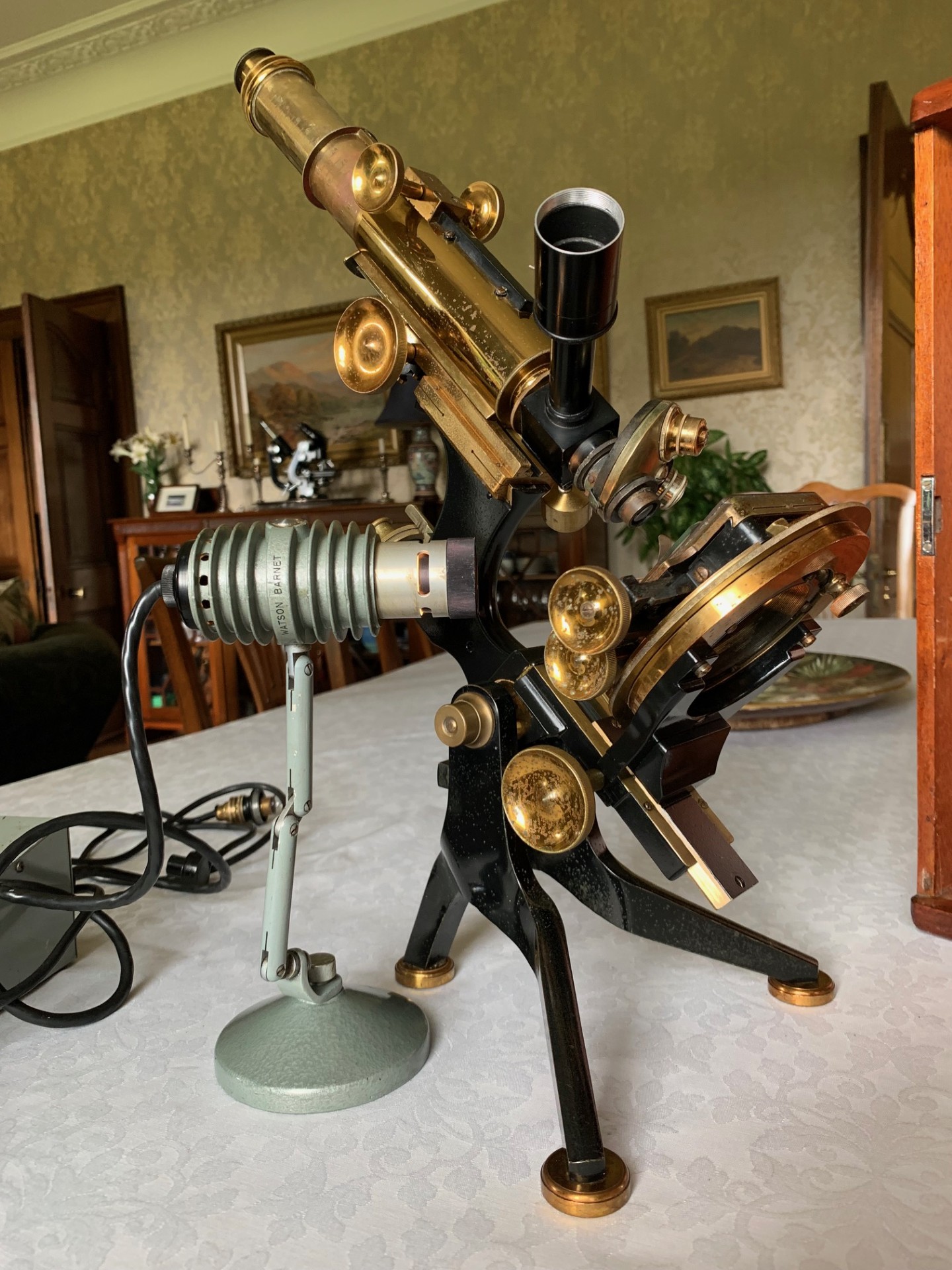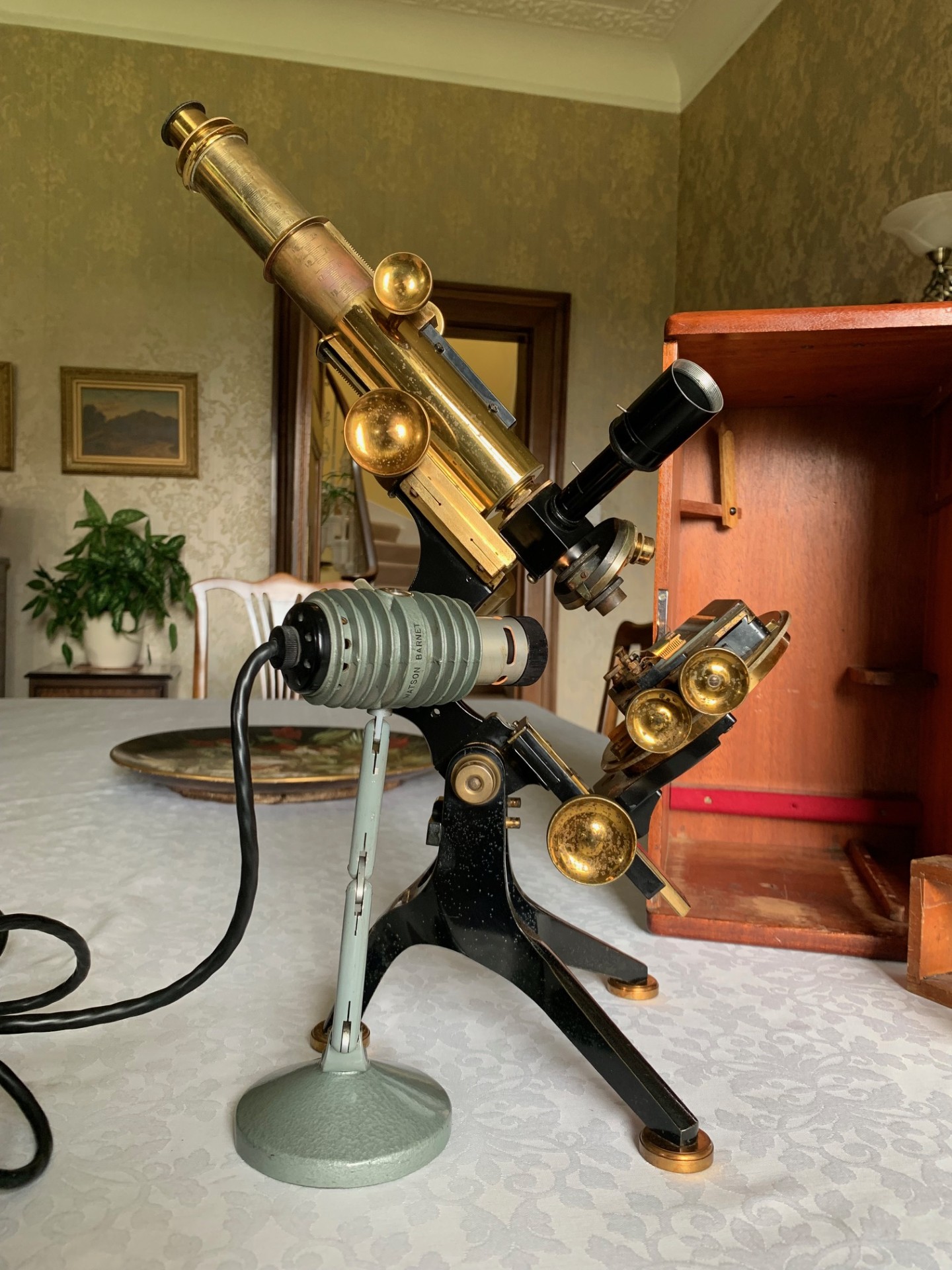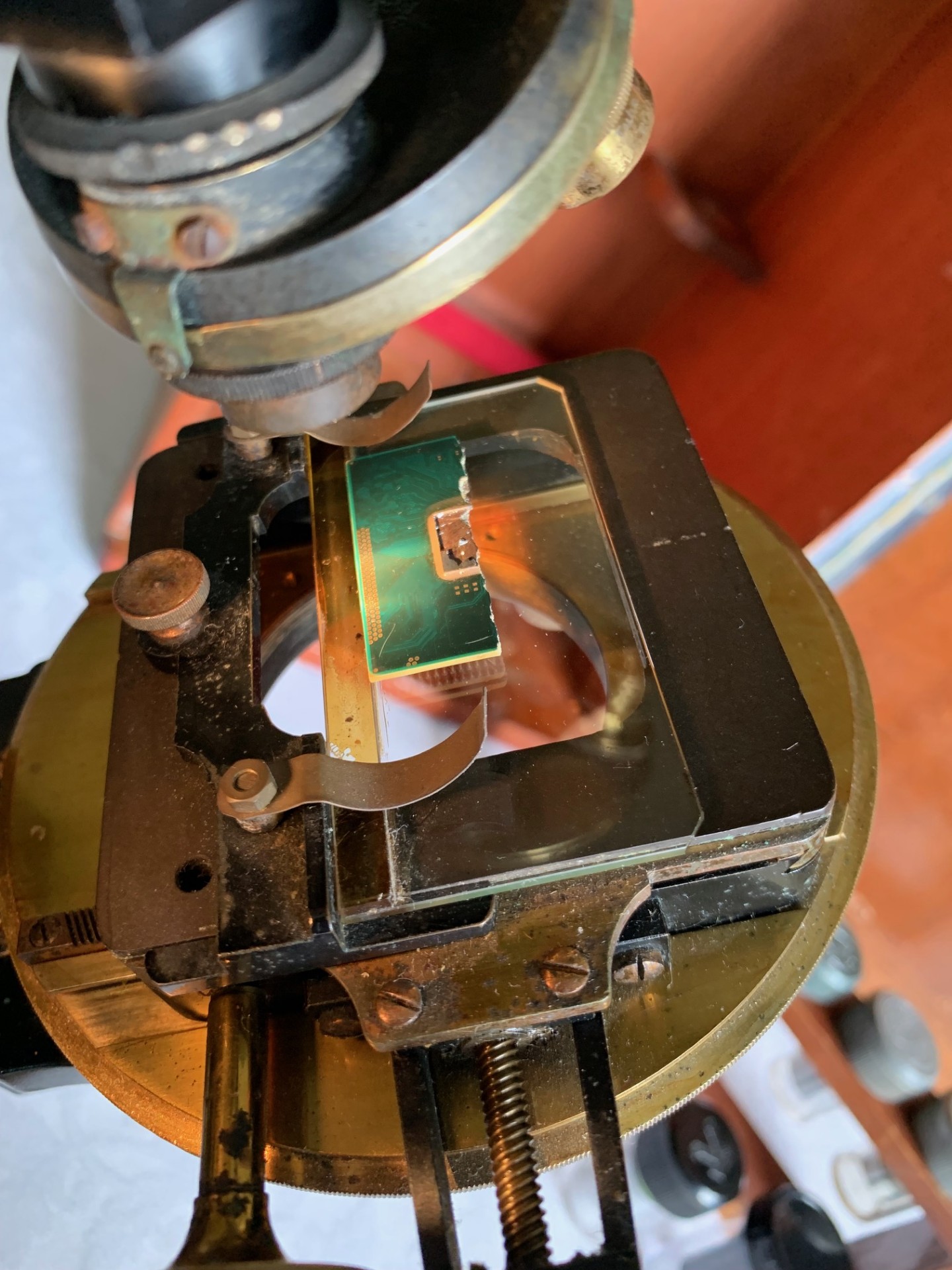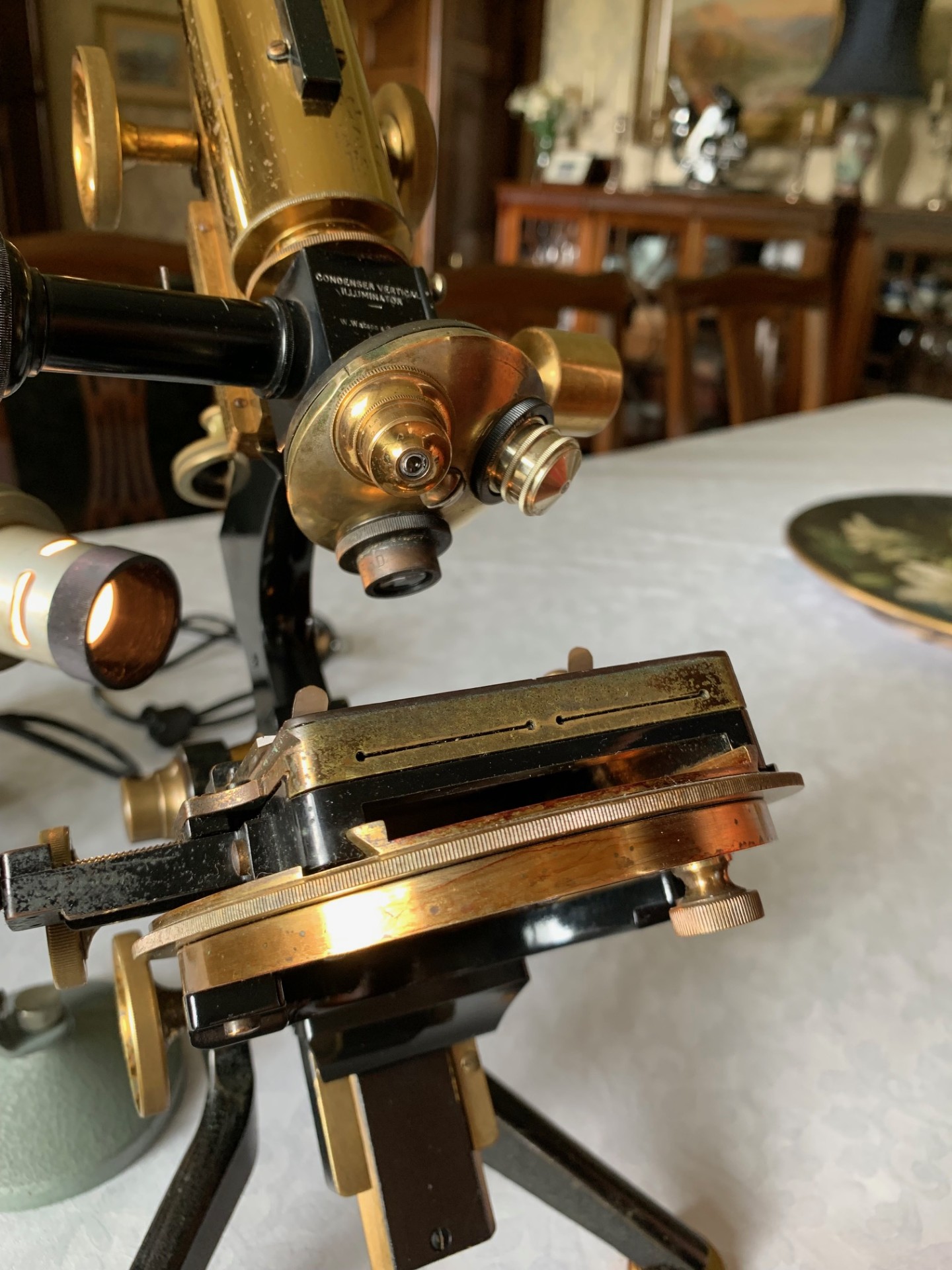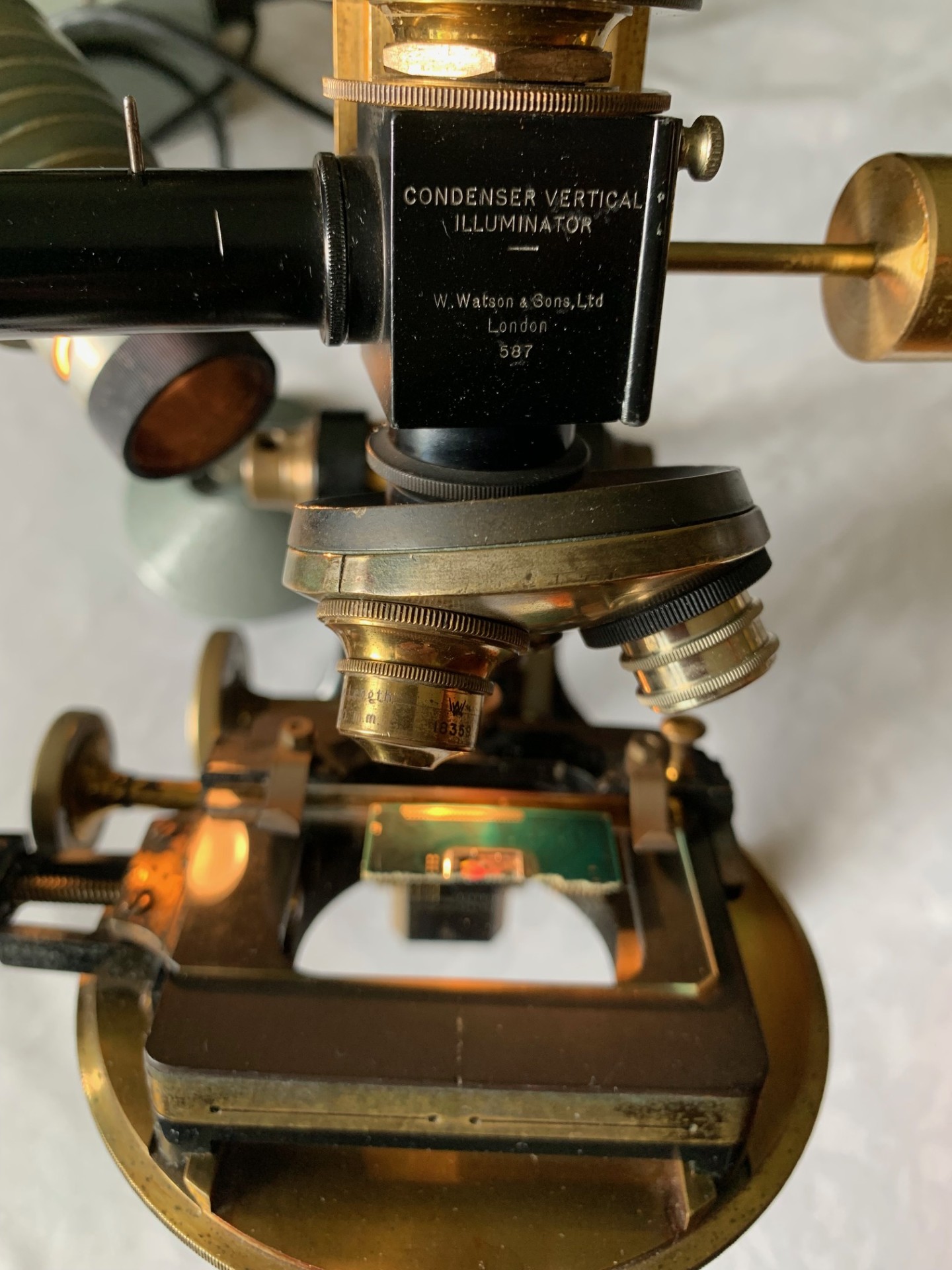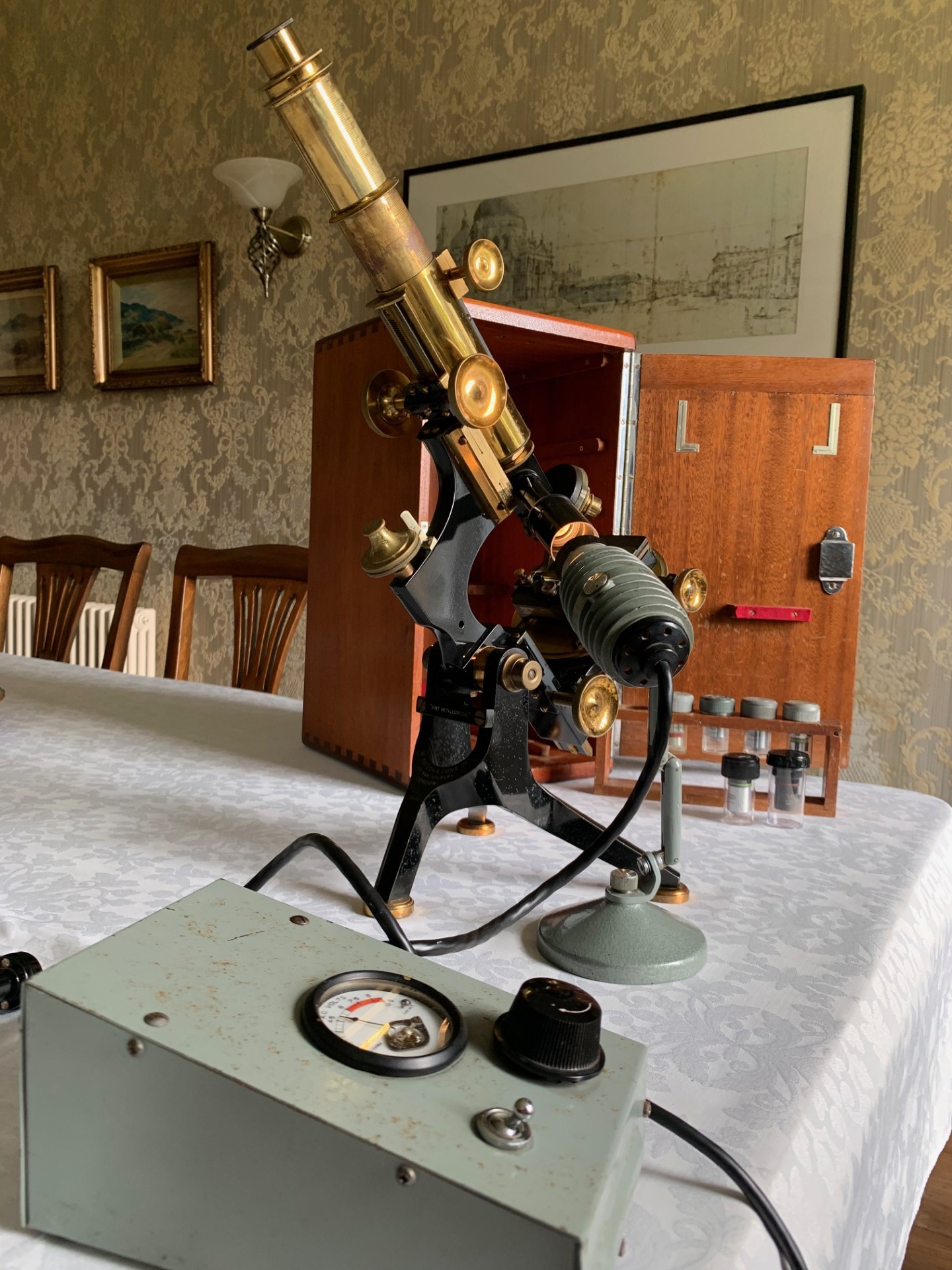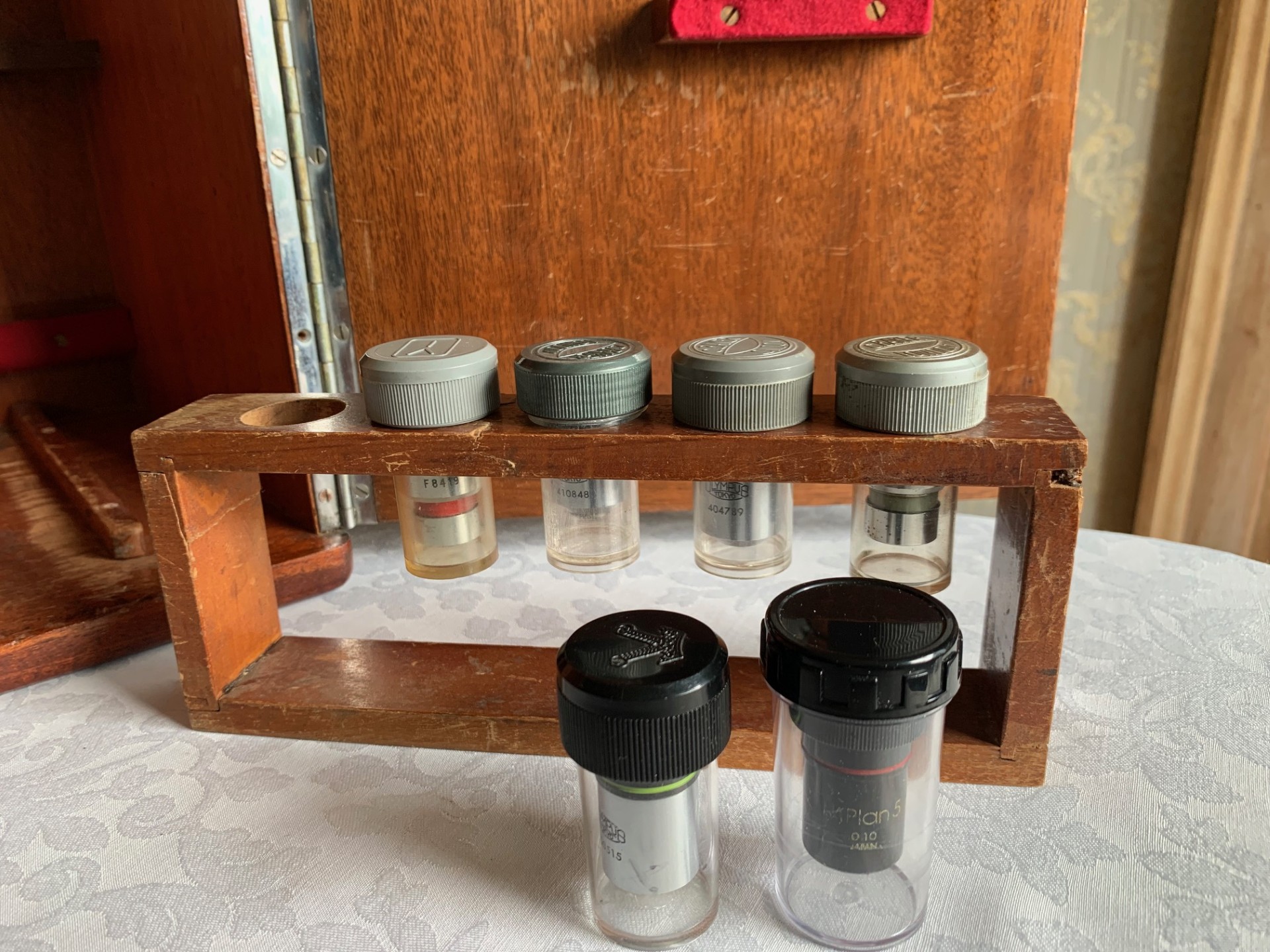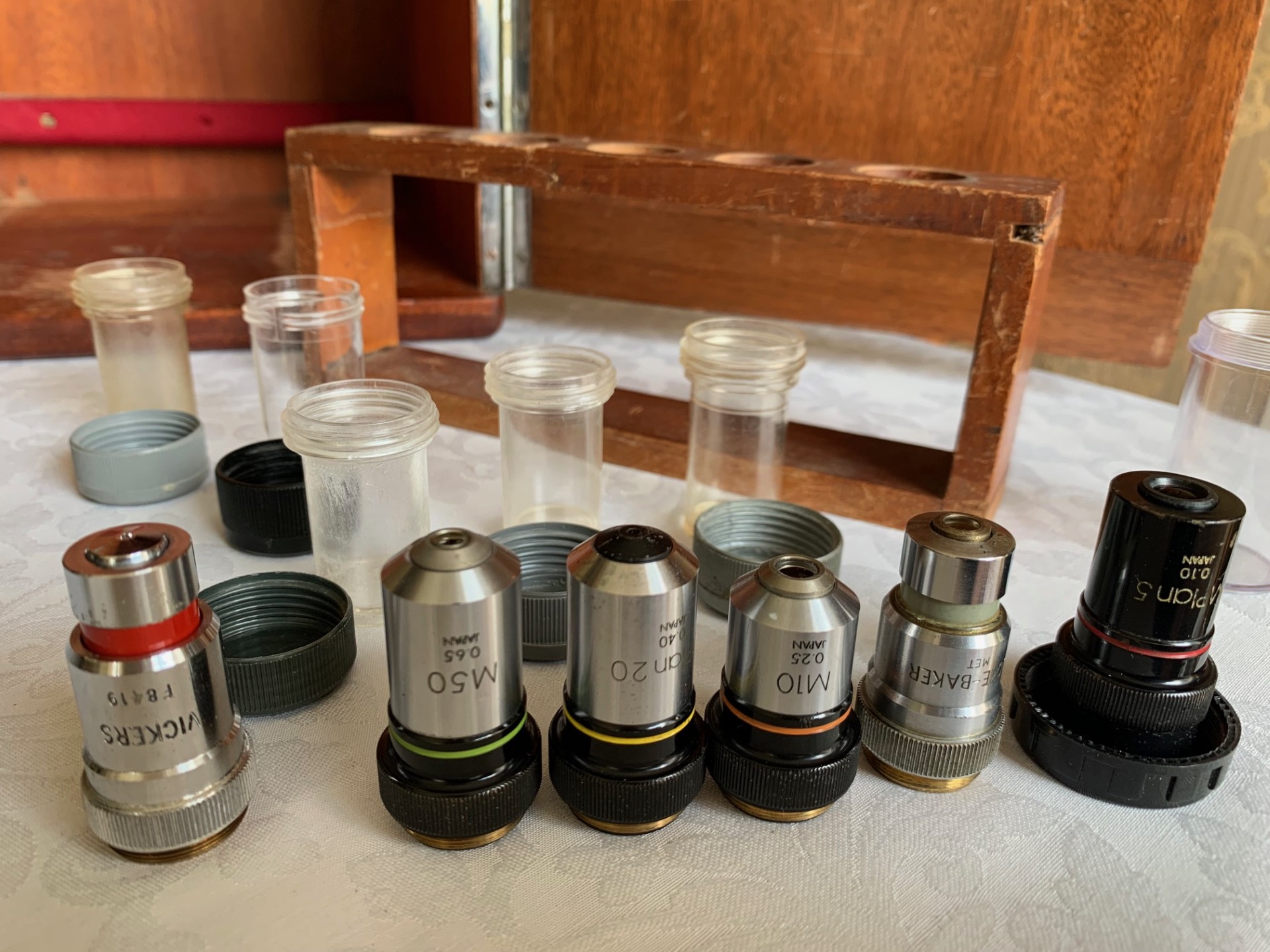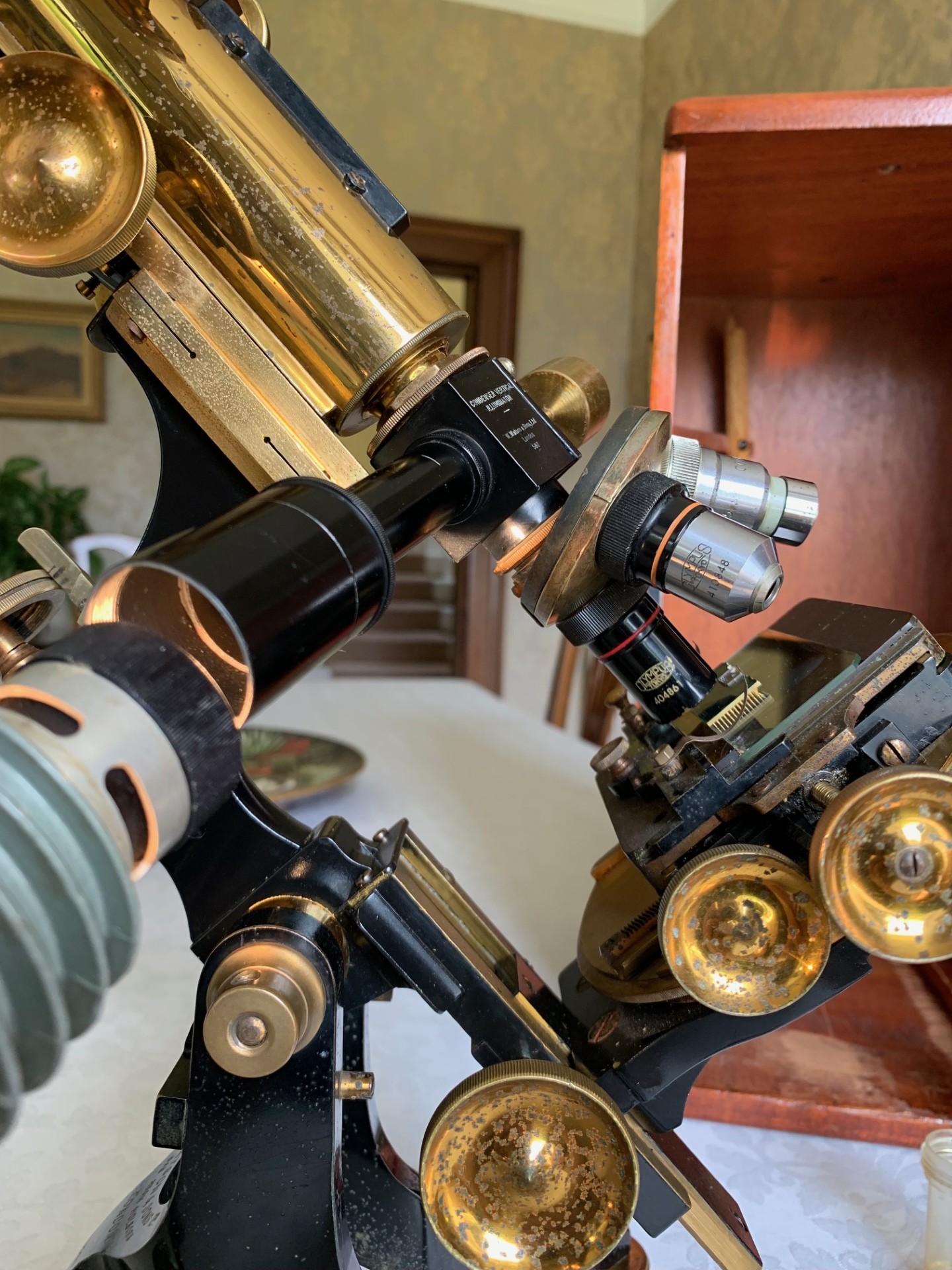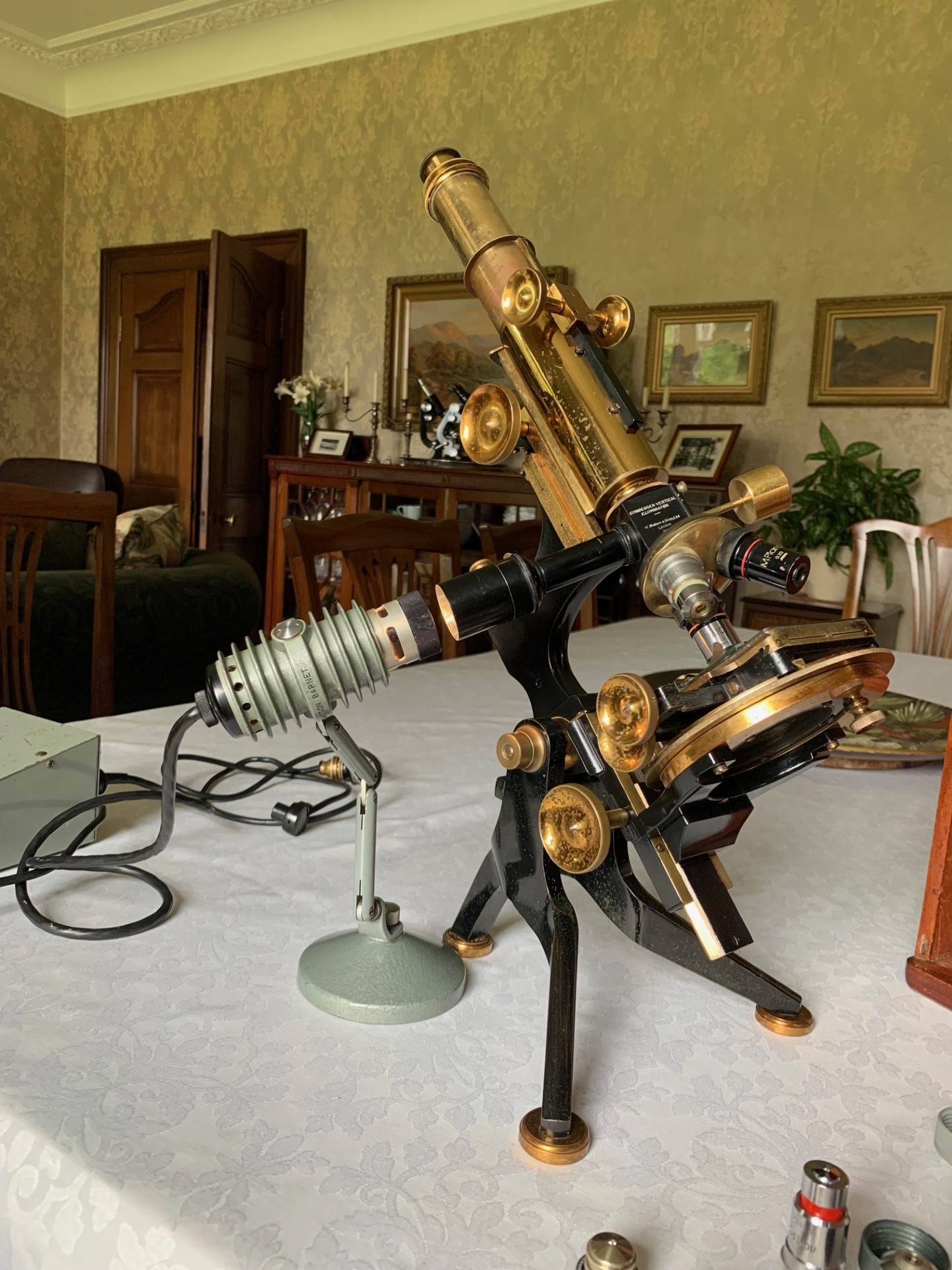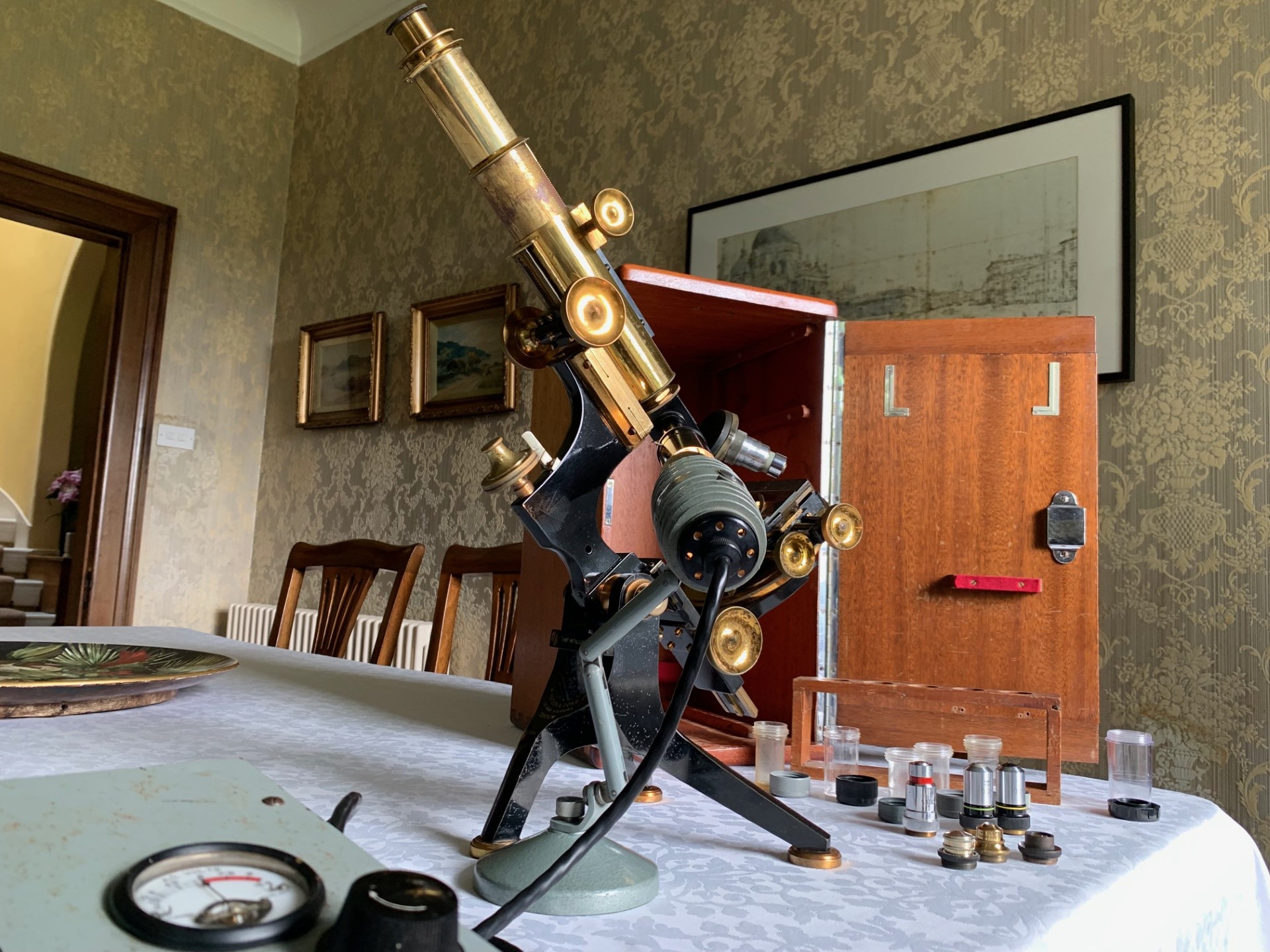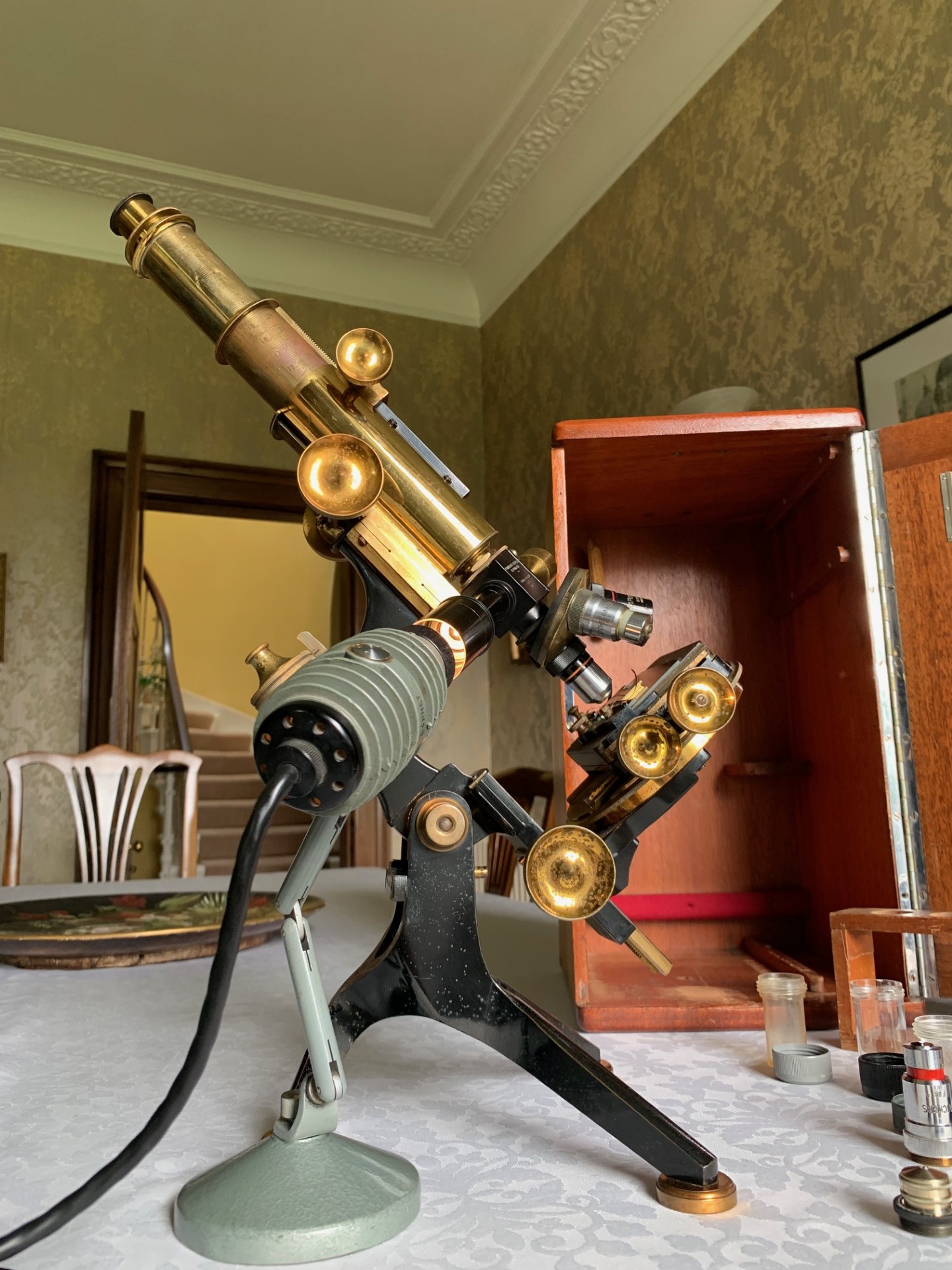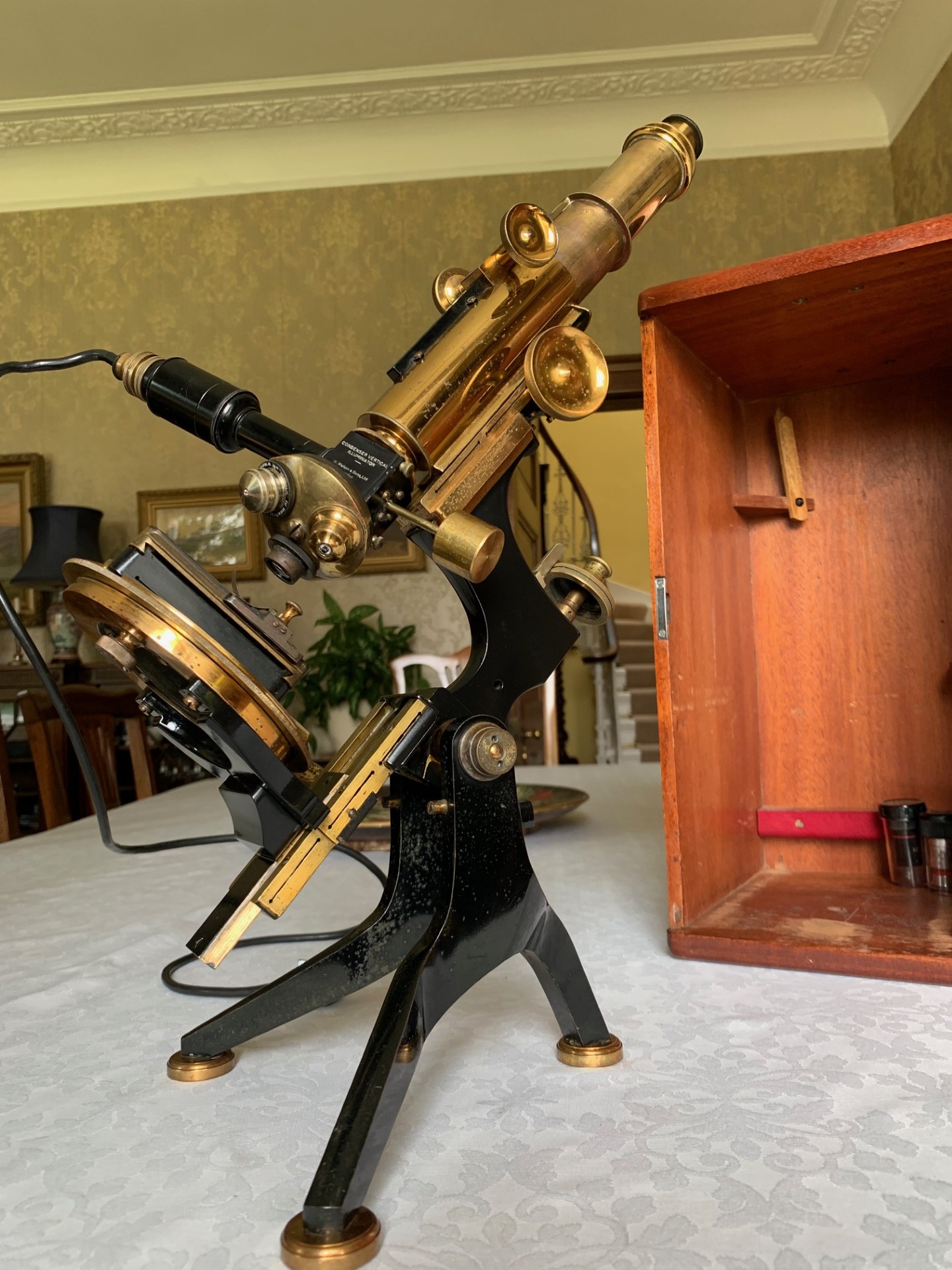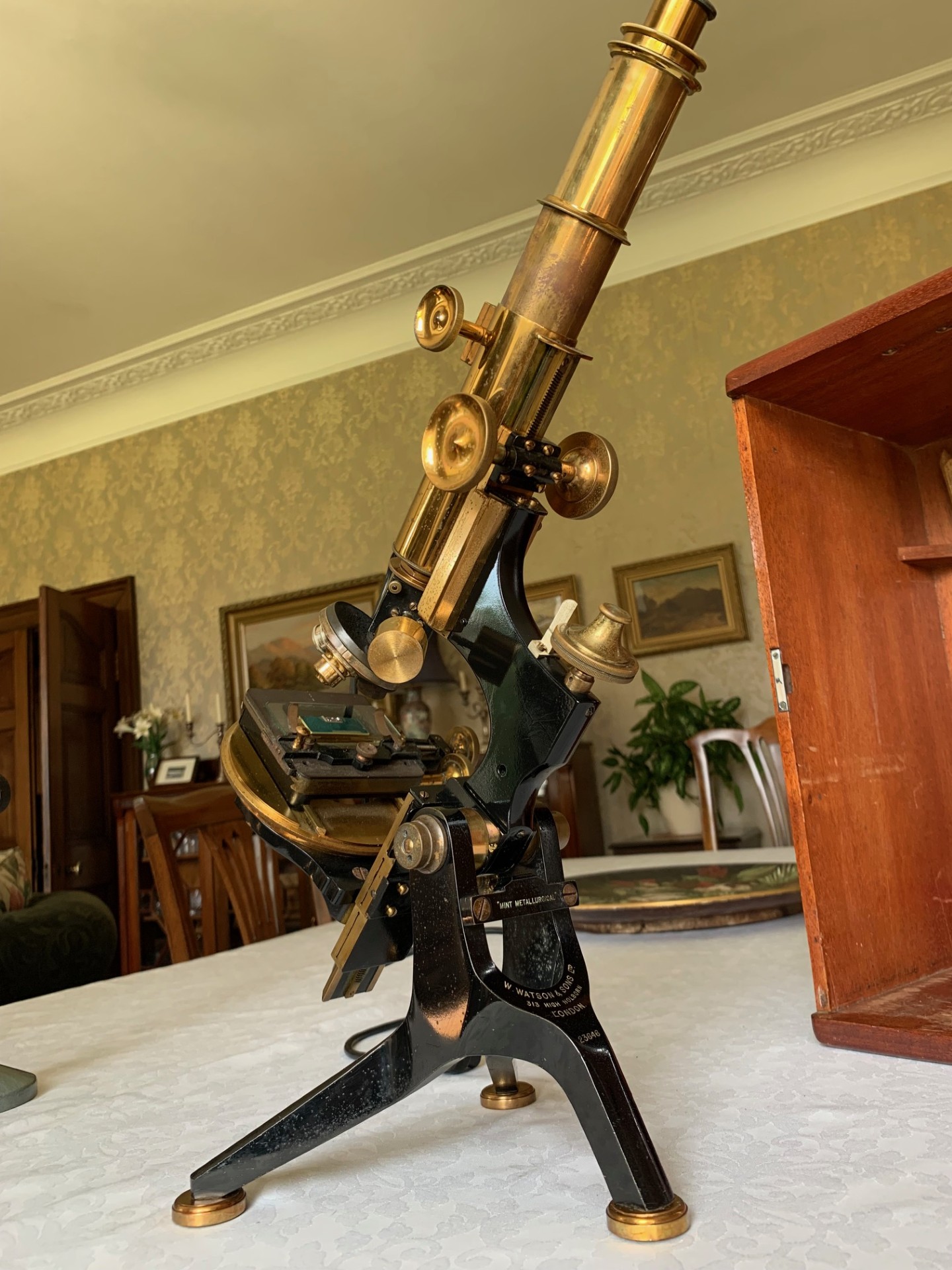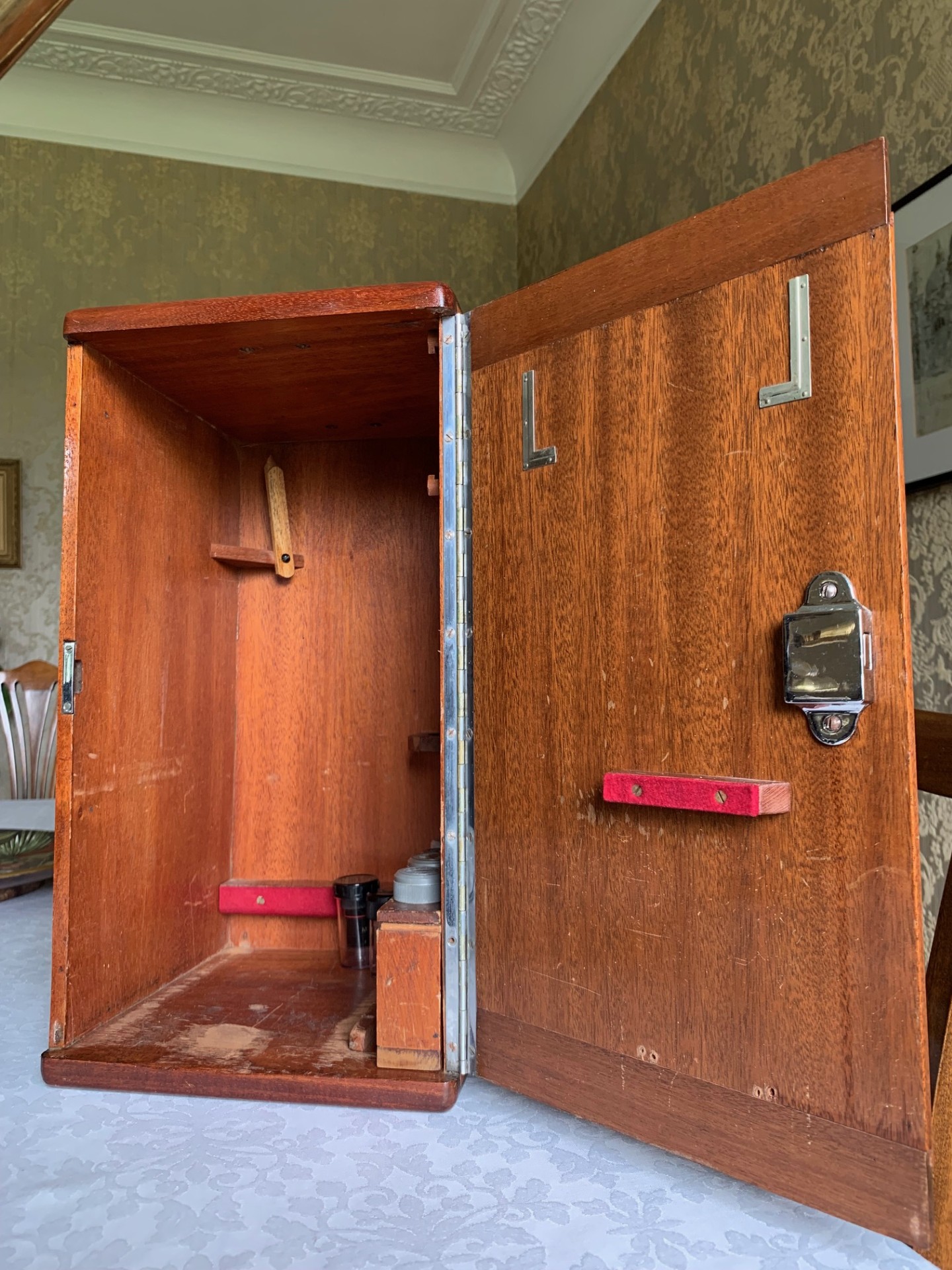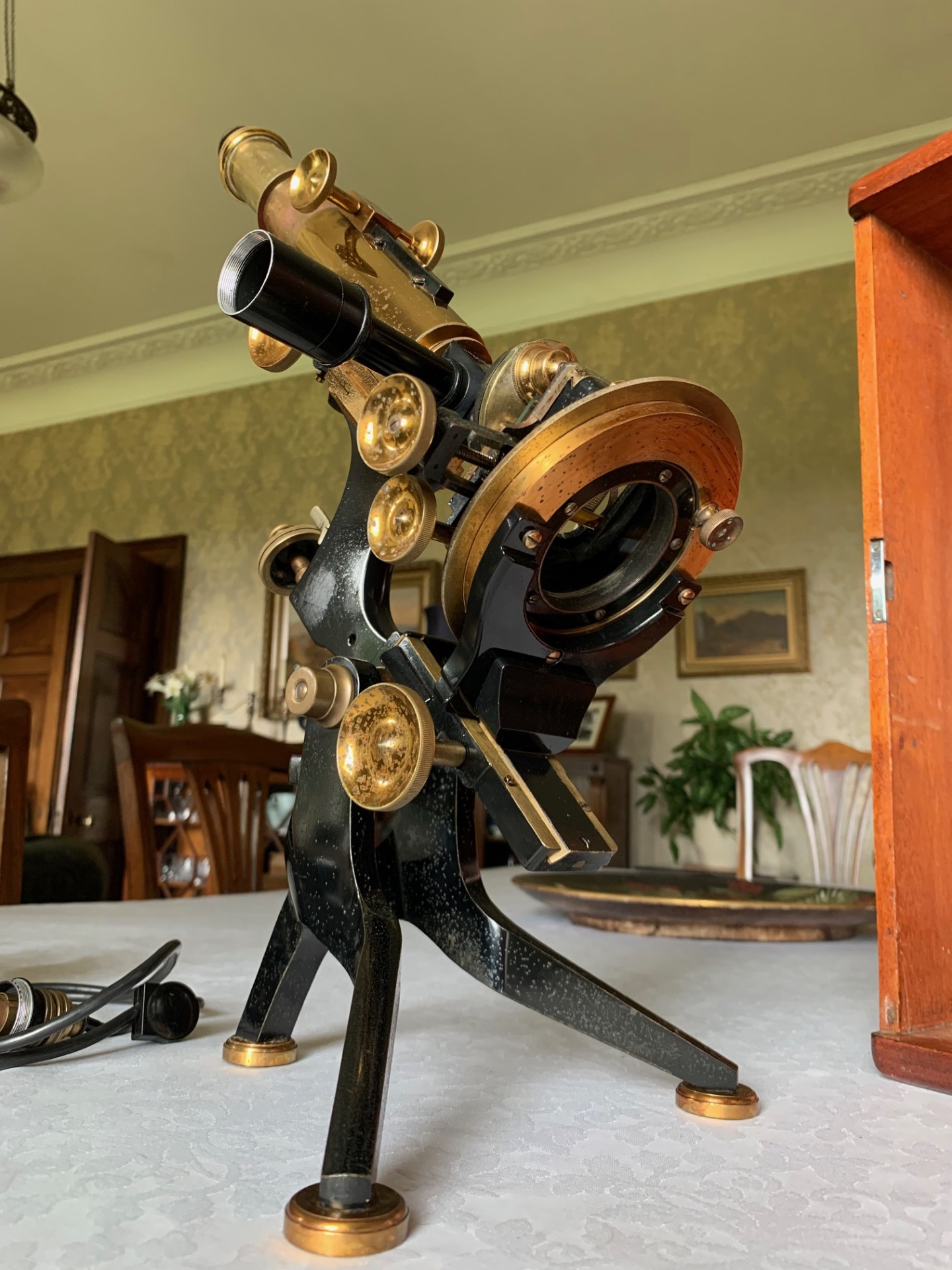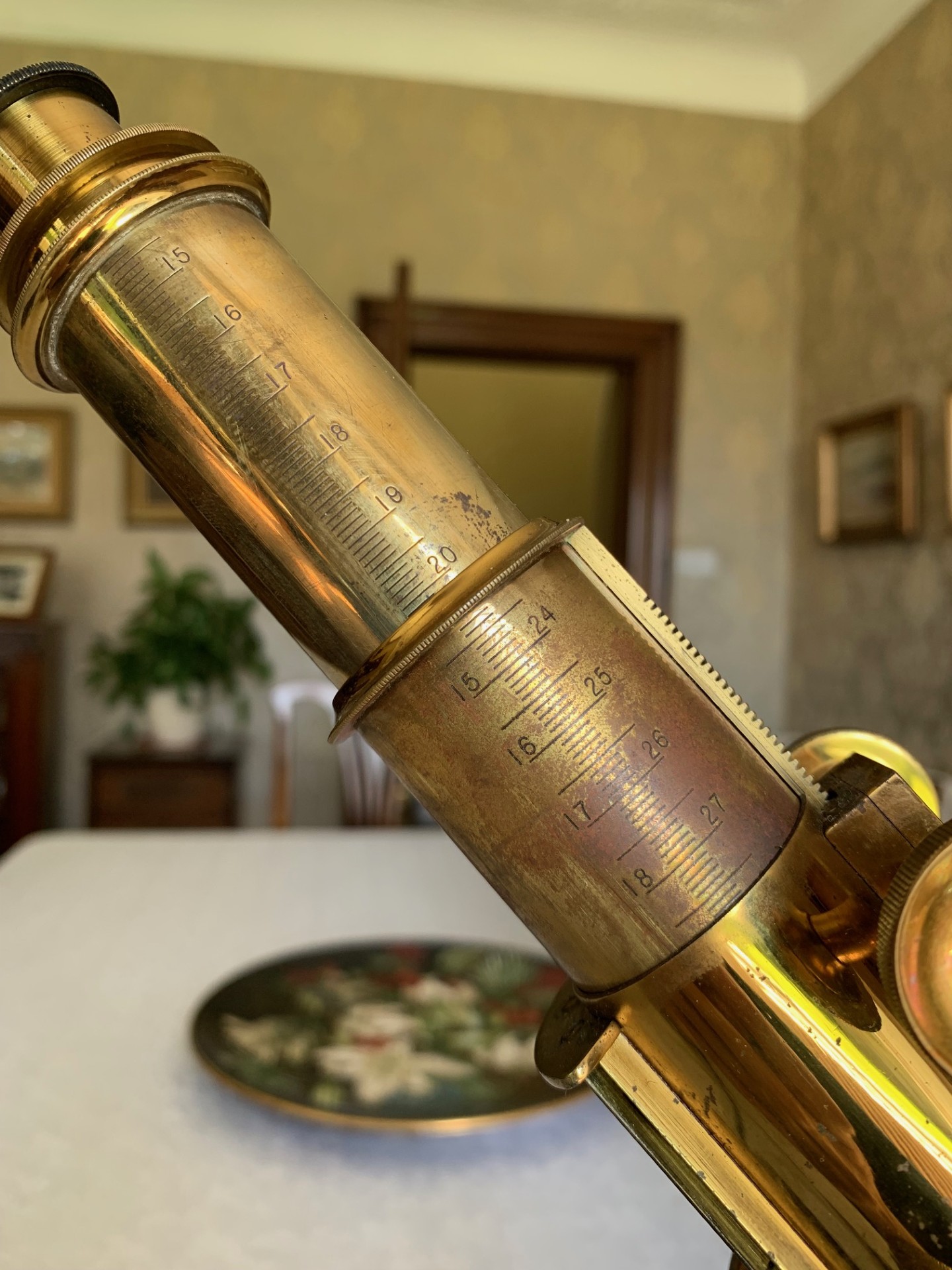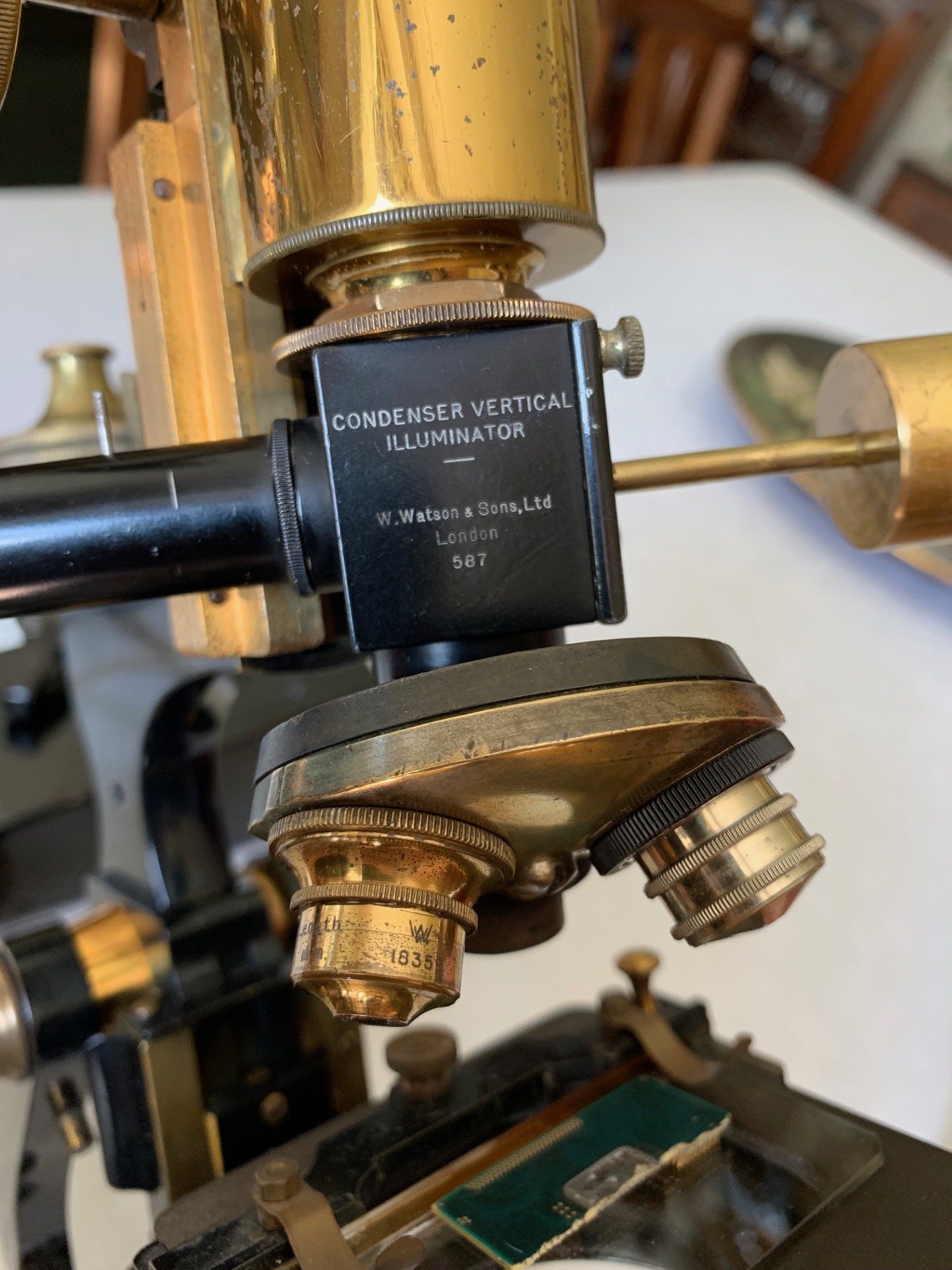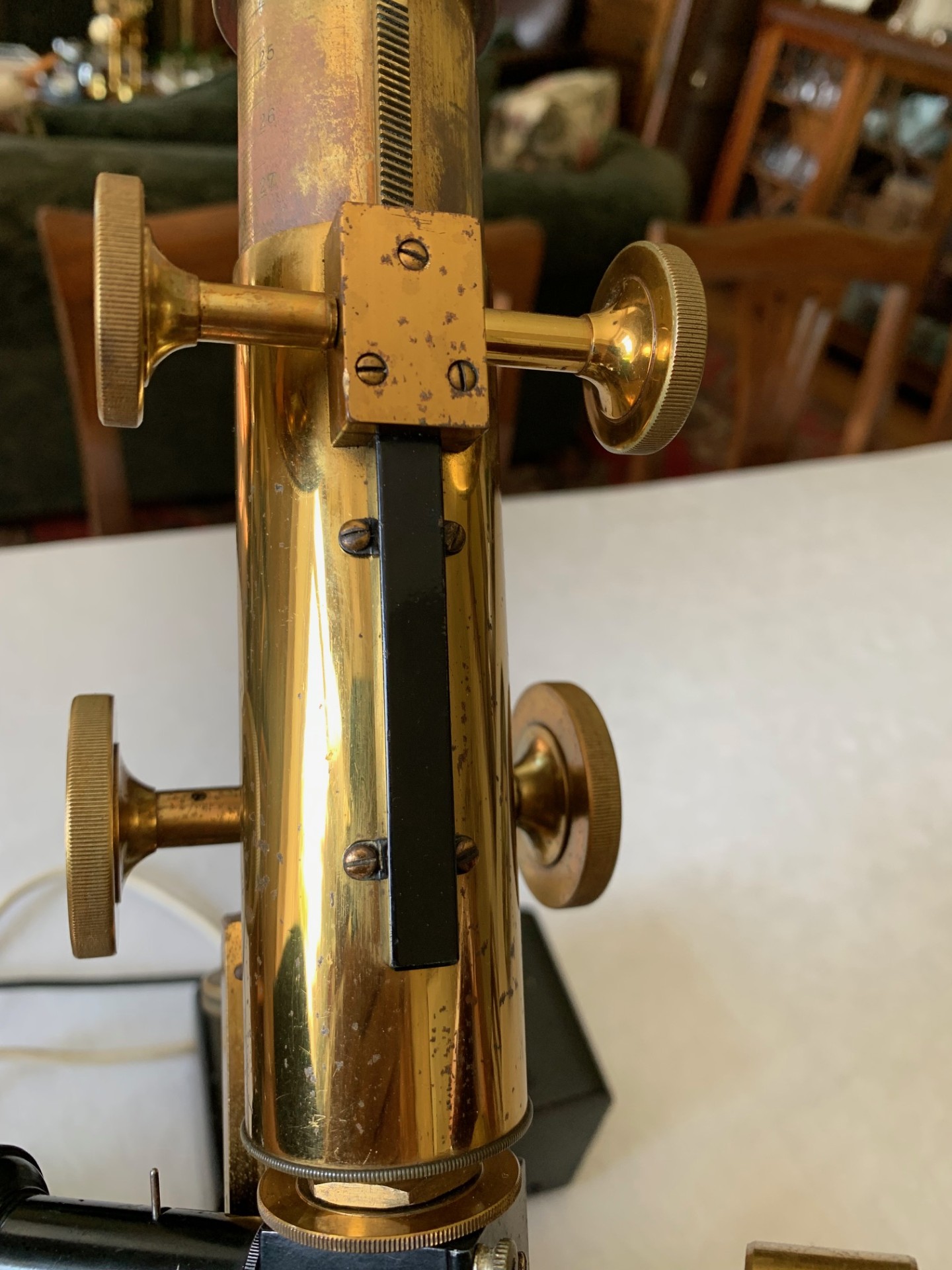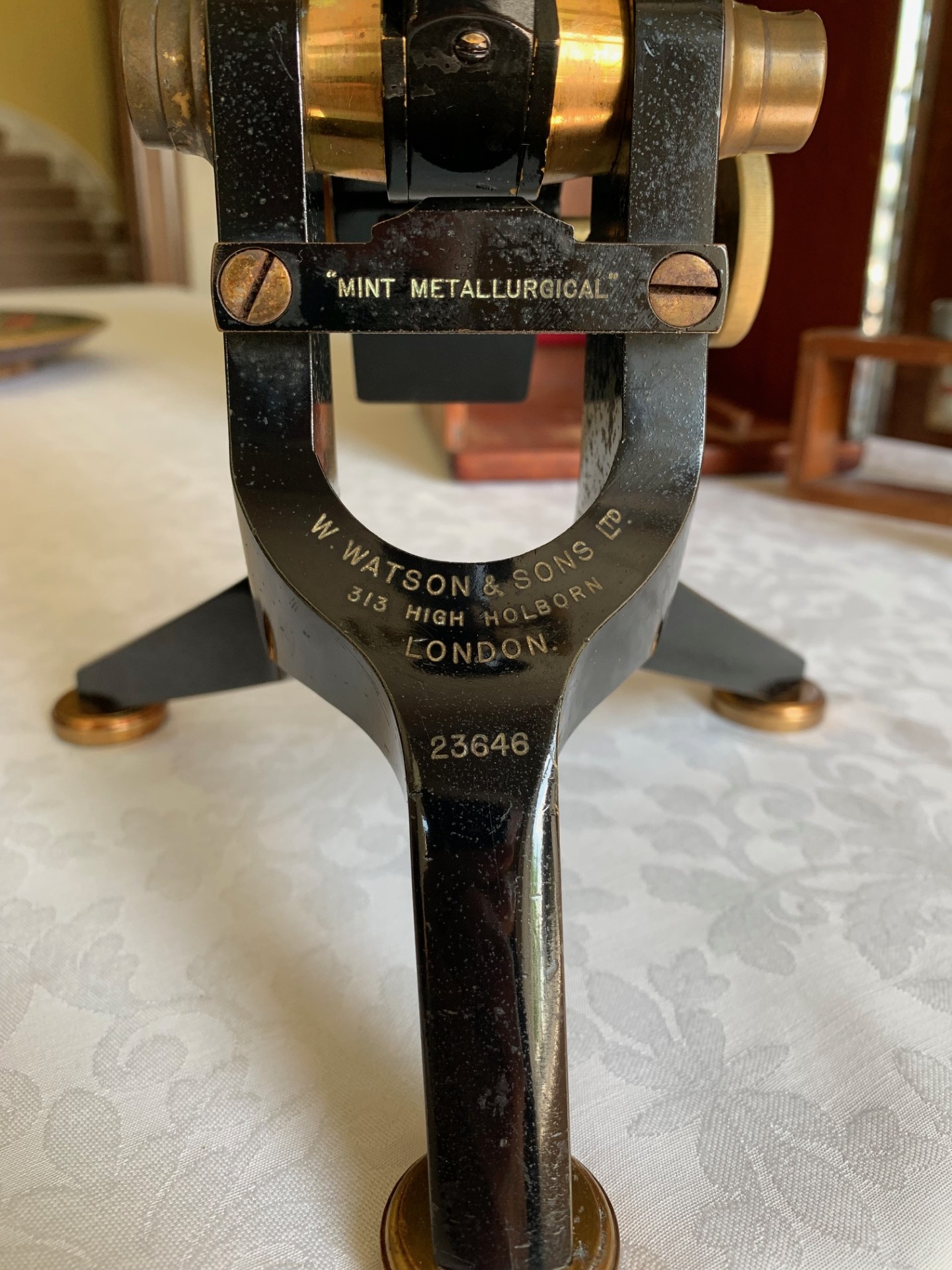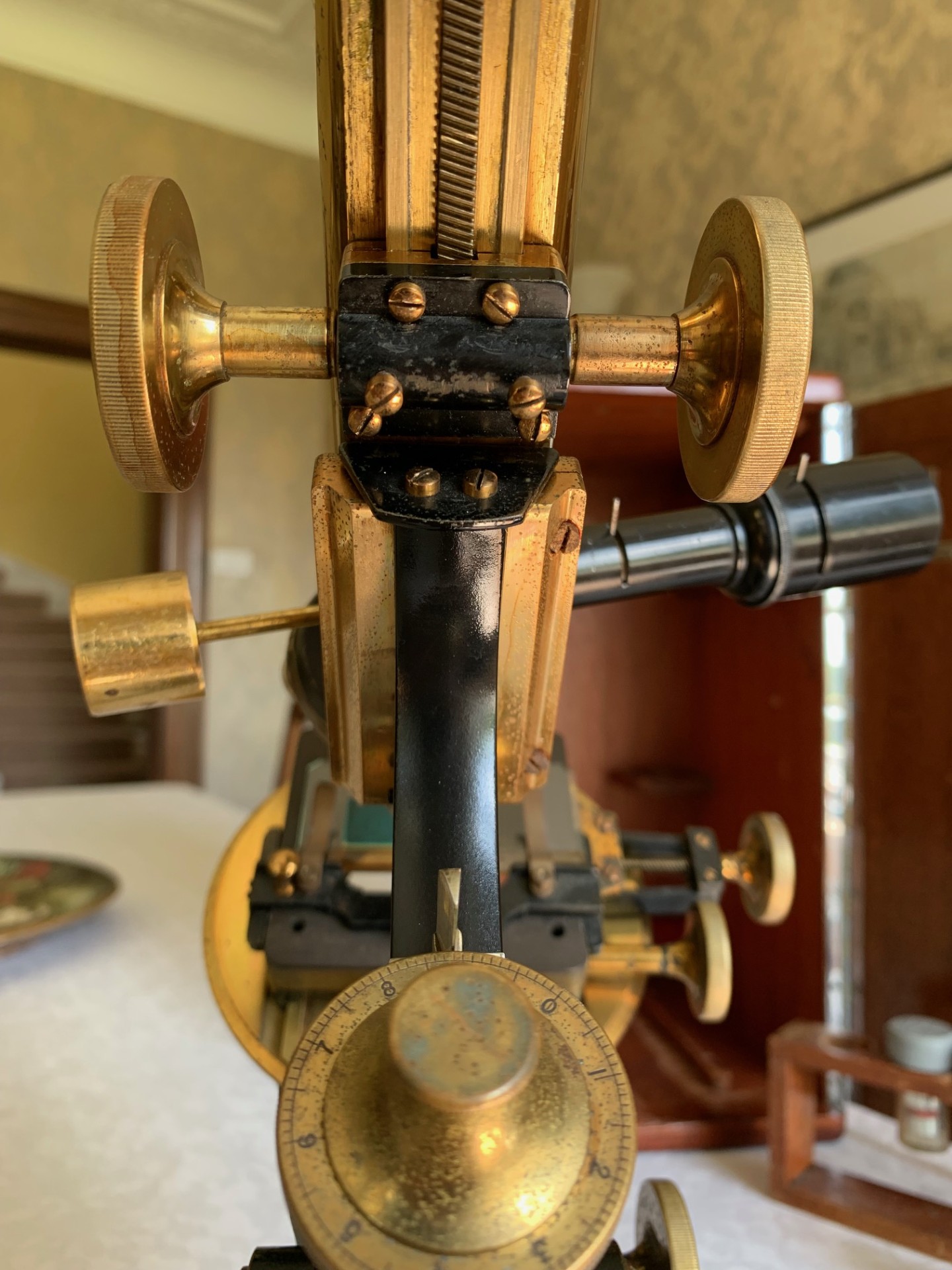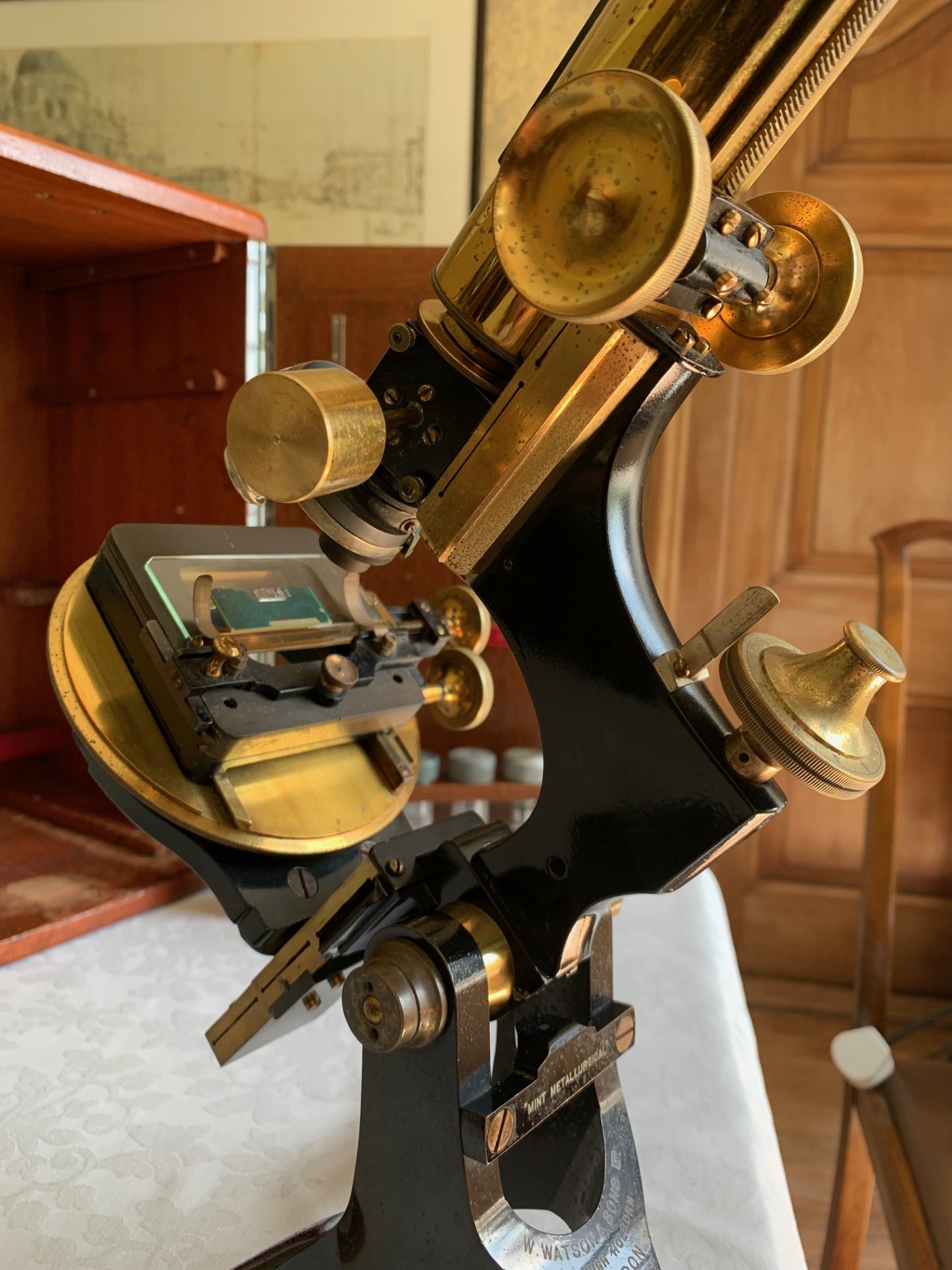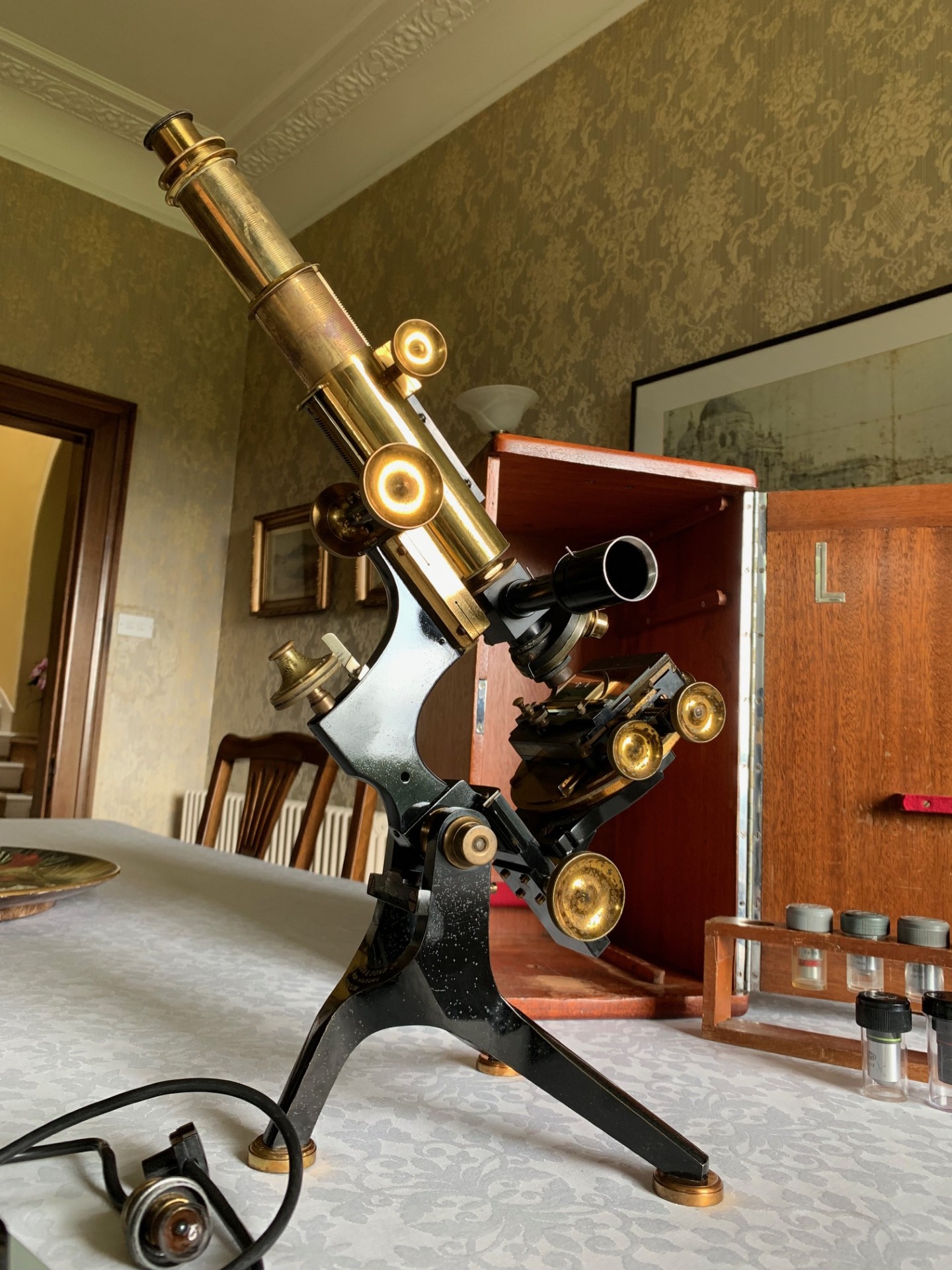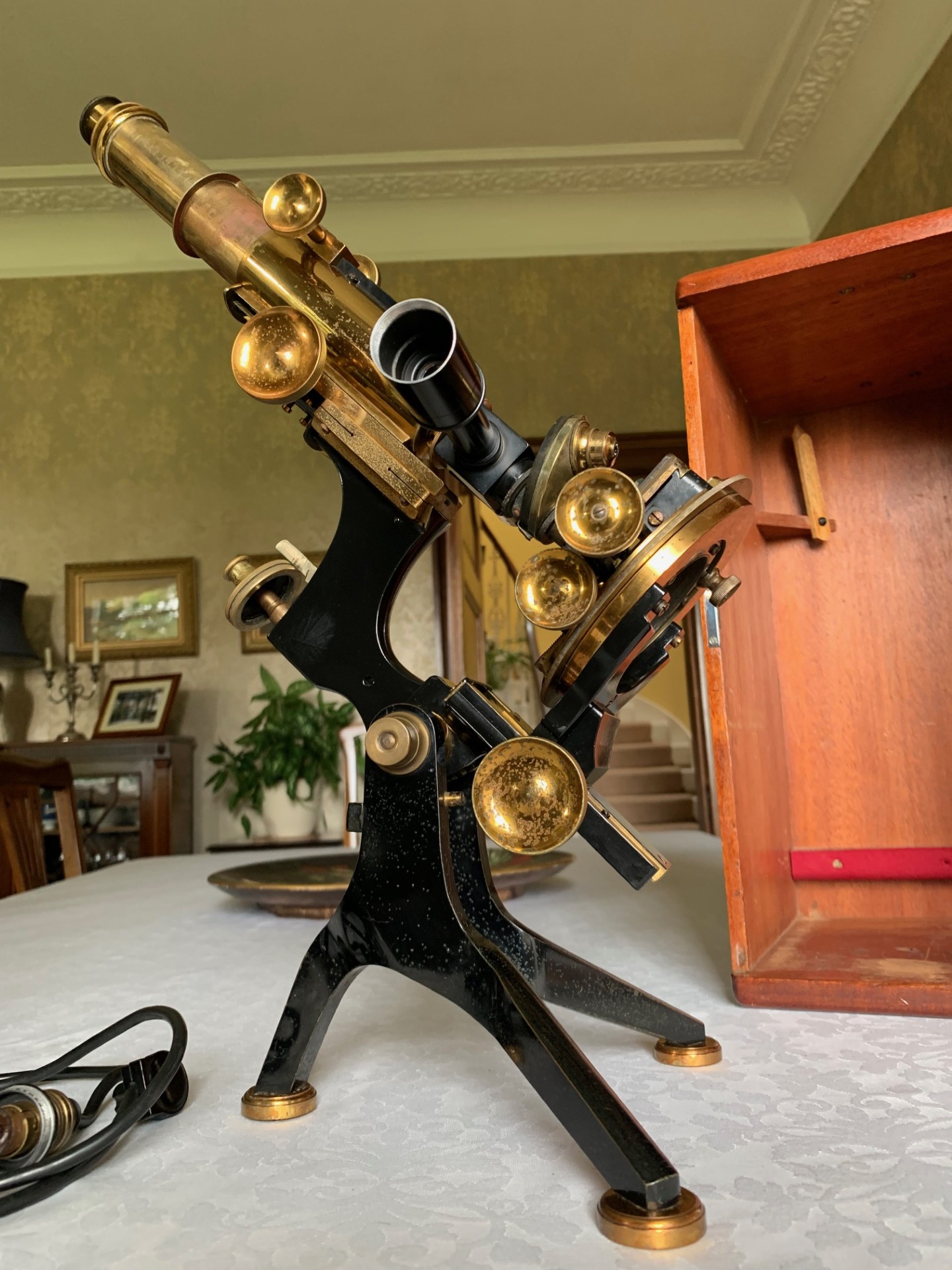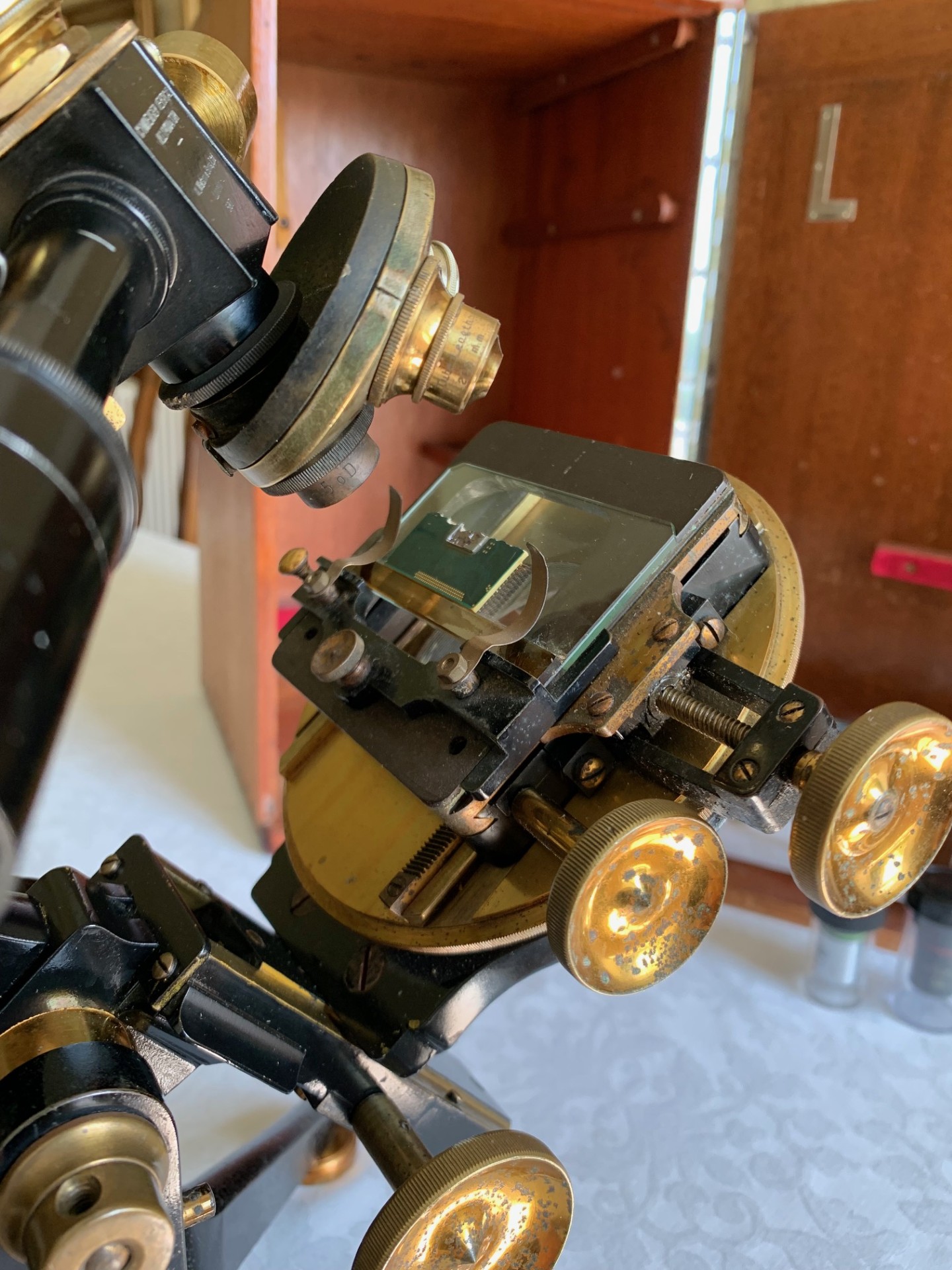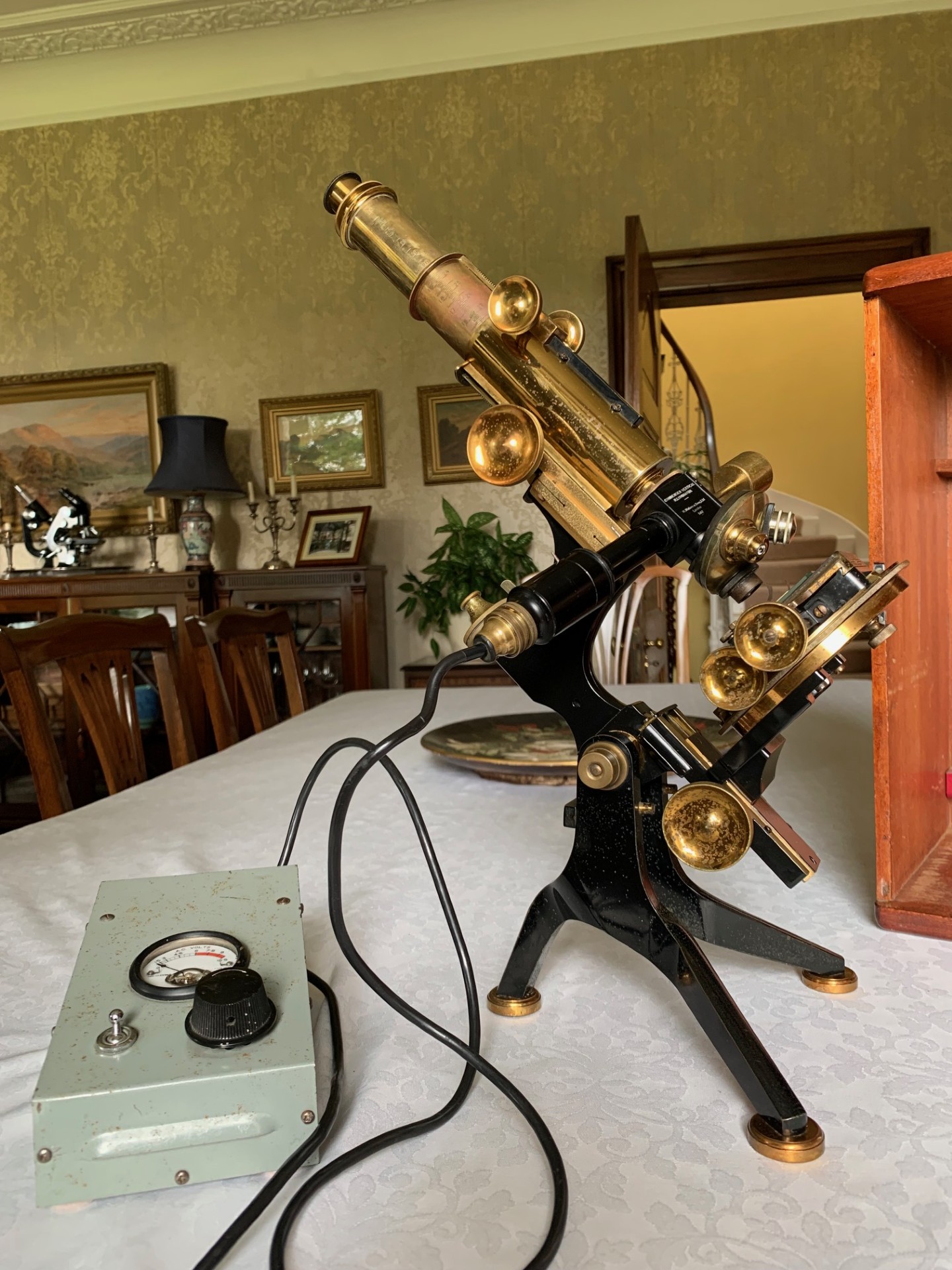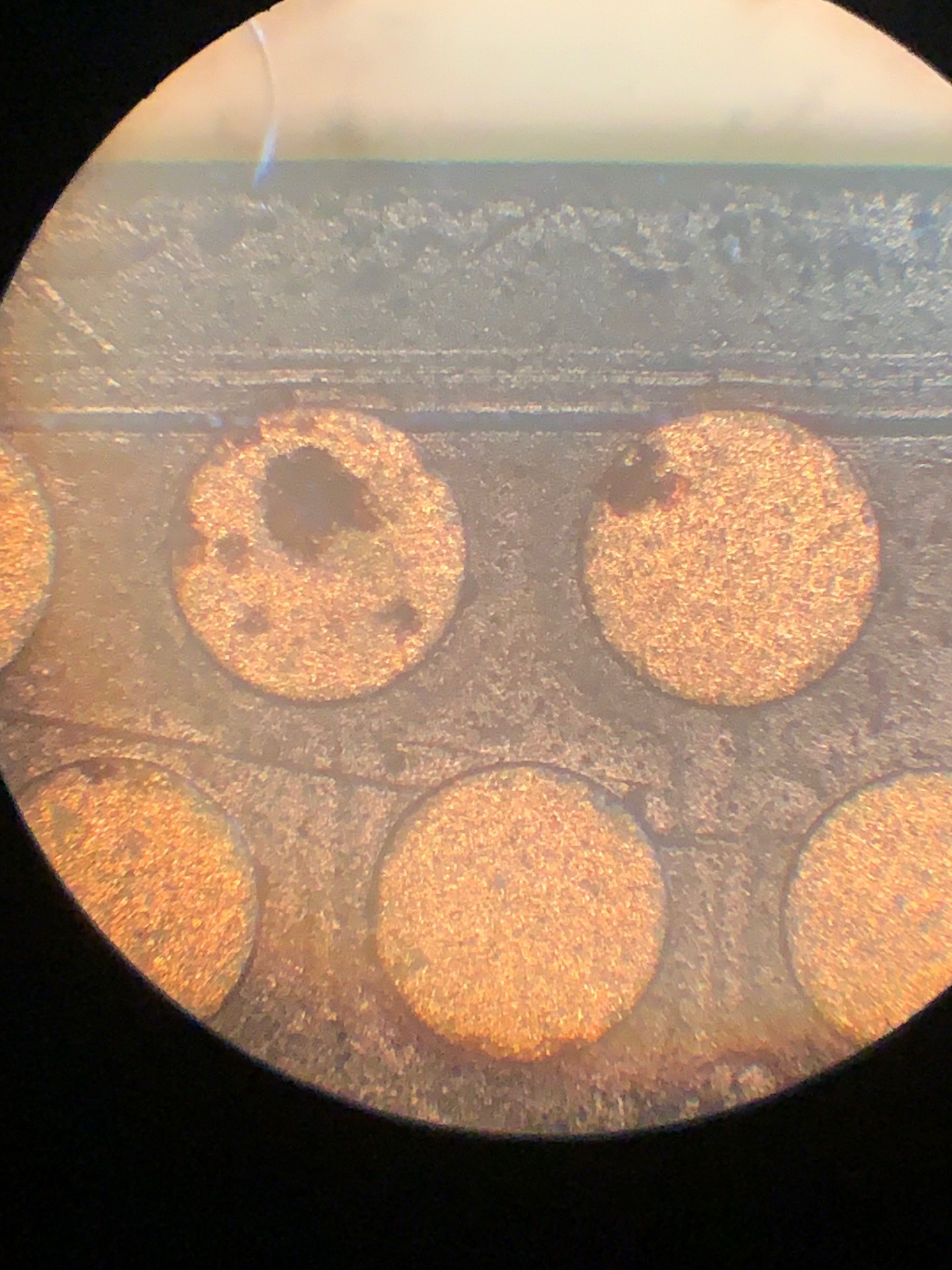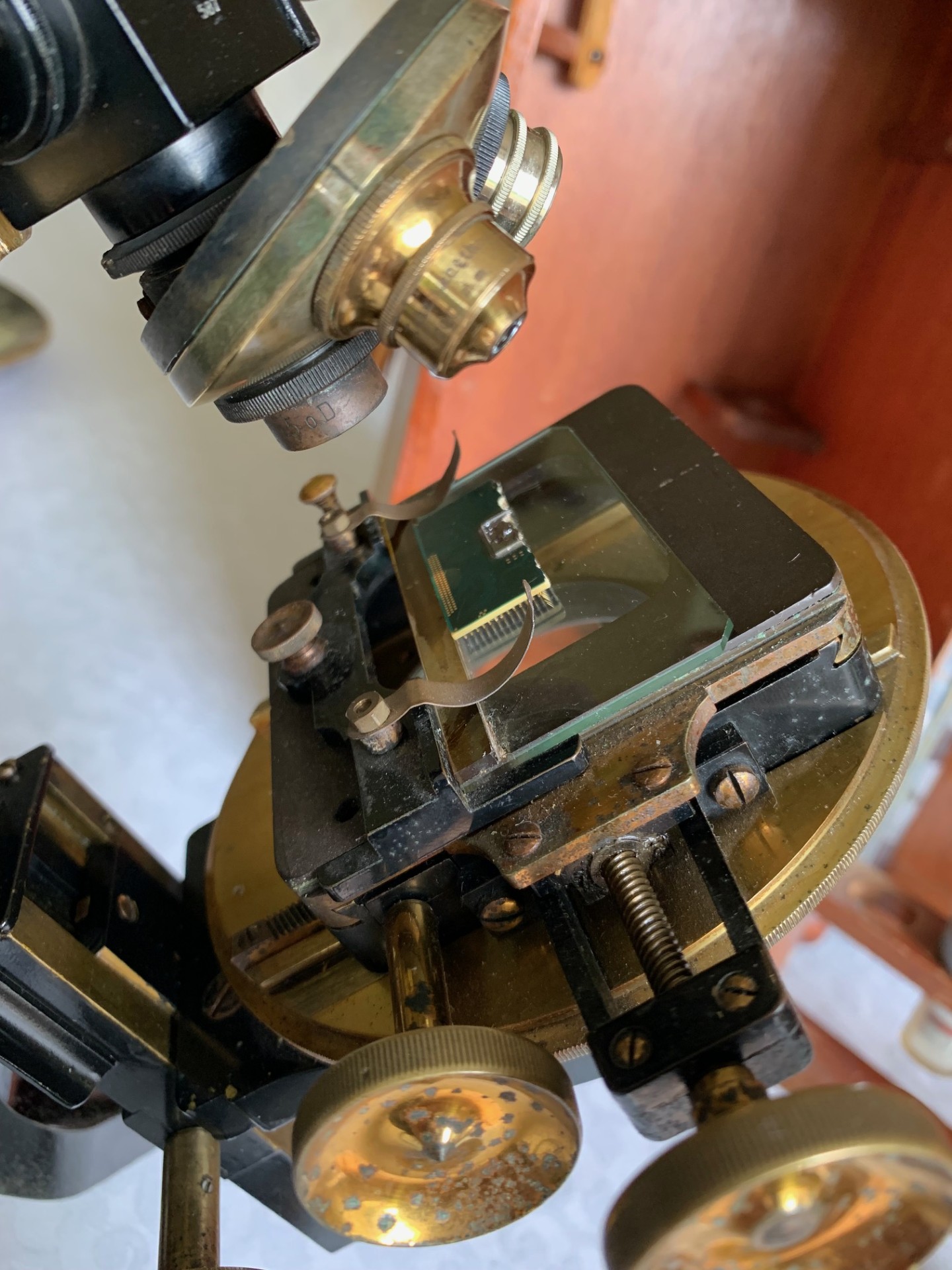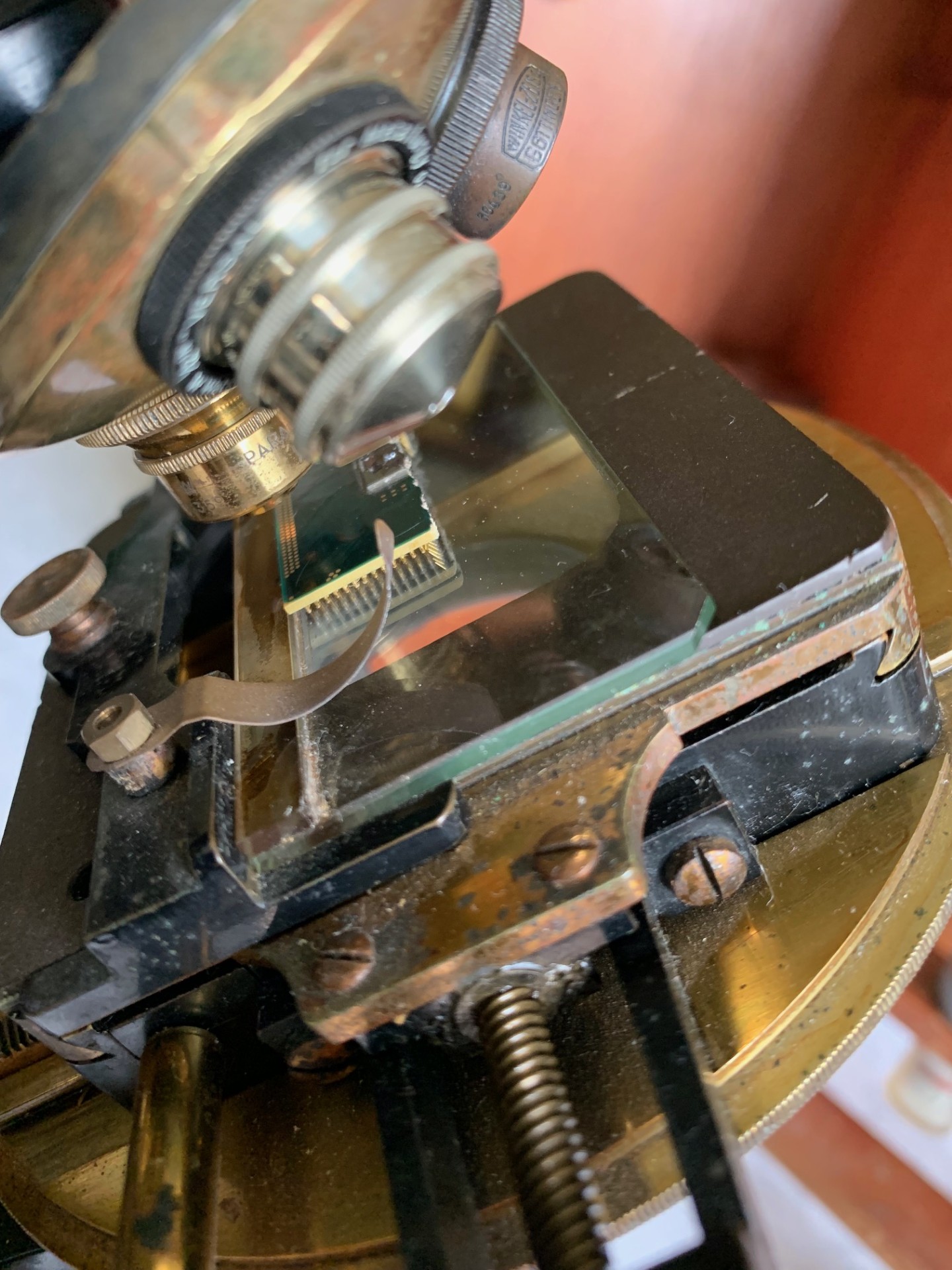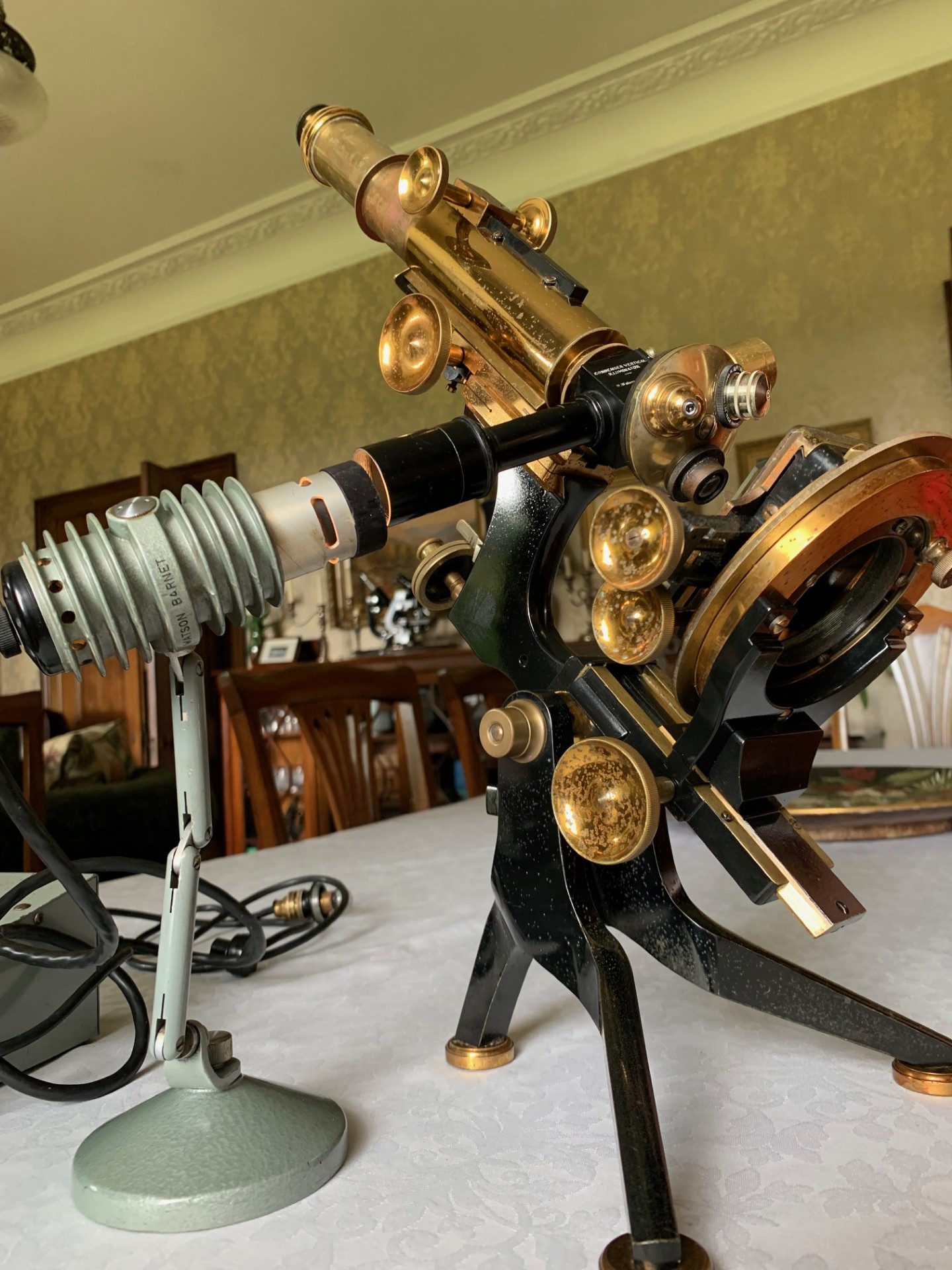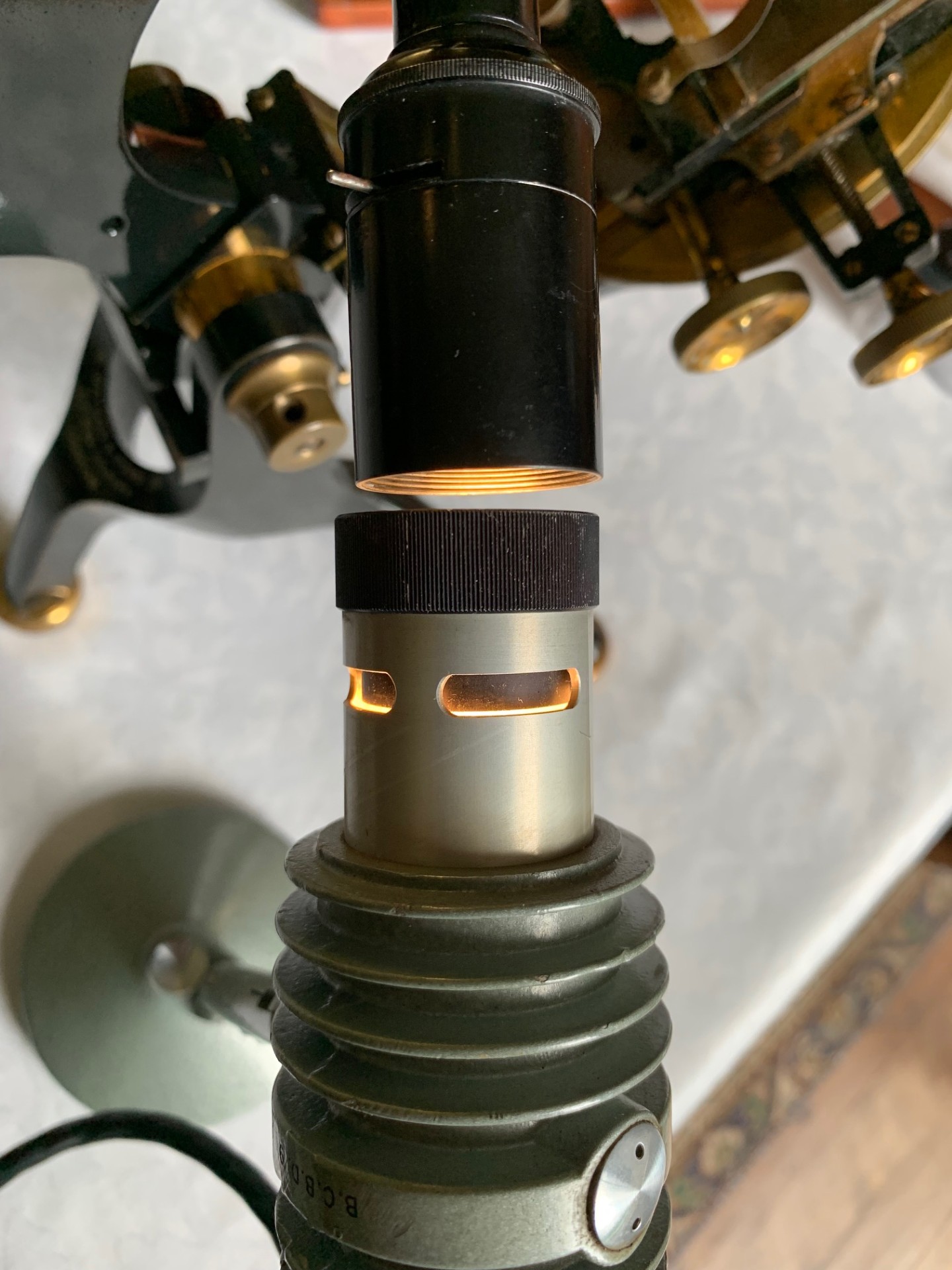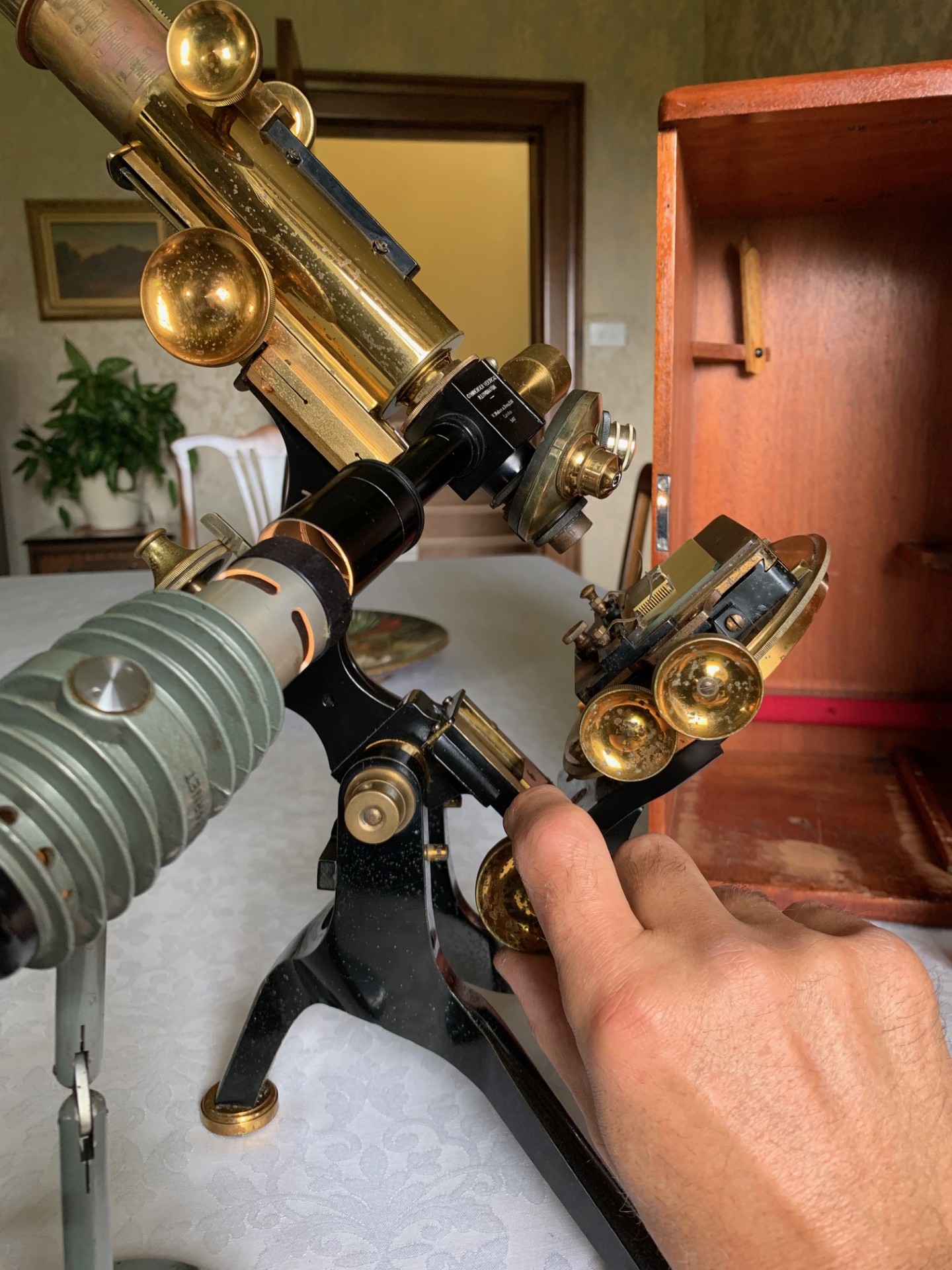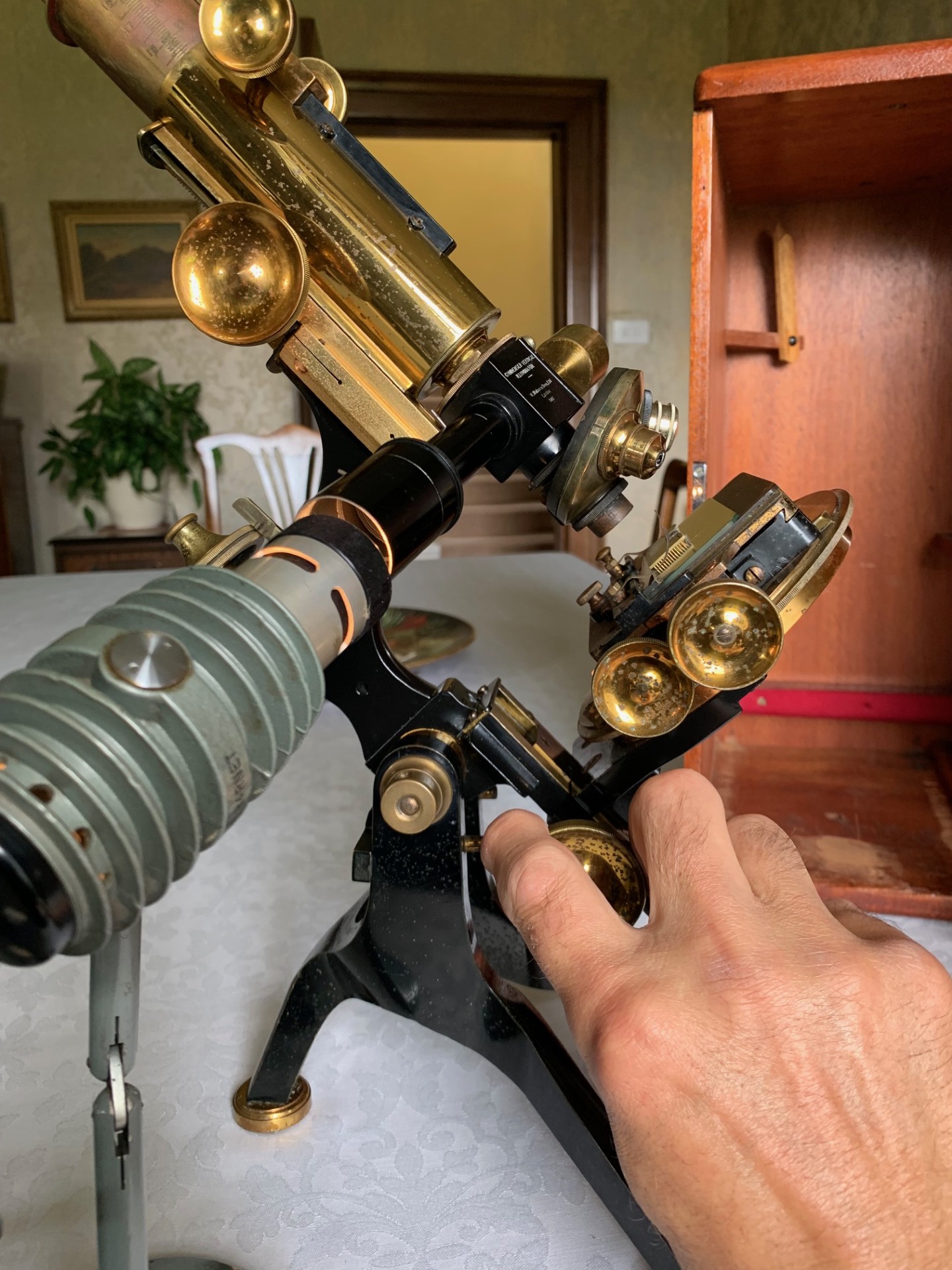Antique Watson Incident/Reflected Light “Mint Metallurgical” Microscope c1917, Cased
£1,350
Excellent working and good cosmetic condition example of a large Watson Edinburgh pattern variant configured for reflected (incident) light microscopy that's based upon Watson's Van Heurck No. 1 model. This specialist model is designated as the "Mint Metallurgical" and is a very rare research-grade instrument for metallurgy, so please read on if you're interested in this example. Comes with a case, but not the PSU and lamp shown in listing.
Circa
1917
Maker
W. Watson & Sons Ltd
Country of manufacture
UK and Ireland
Description
Rare grail instrument by Watson – a Metallurgical Van Heurck variant – produced during WWI and known as the Mint Metallurgical model.
Offered for sale we have a rare variant of the Edinburgh pattern microscope by W. Watson & Sons Limited of London. It’s a specialist model, being a variant of Watson’s Van Heurck No.1 that’s configured for reflected/incident light. As such it’s set up as a Metallurgical instrument designed specifically for reflected/incident light microscopy and the study of surface features on solid/opaque specimens including metallic surfaces and the like. This model is known as the “Mint Metallurgical” with this example dating to around 1917 based on the sequential Watson production number of 23646 which is engraved onto the rear tripod leg. It appears to be in original condition as far as I can tell and has obviously been well used during its service life and also pretty well looked after.
The Van Heurck model range was produced Watson based on a design scheme originally proposed by famous Belgian microscopist Henri Van Heurck (1839 – 1909), hence the designation afforded to this top-of-the range series of instruments. The Van Heurck, Royal and Edinburgh models of Watson microscope all bear the same signature shape and indeed the Van Heurck was essentially based upon Watson’s Edinburgh design of microscopes, which they had been manufacturing in various guises since about 1887. The signature form includes a tripod base and upper limb with vernier screw/lever fine focus mechanism. The Van Heurck models tend to have additional features over and above both Royal and Edinburgh models and there’s also specialsit variant models, such as this one for metallurgy. There were a number of different Van Heurck models produced by Watson with quite a complicated series of enhancements and developments, together with a range of accessories and also specialist variants for inter alia metallurgy. The Van Heurck variants produced by Watson from around 1893, with final examples produced into the 1930s, were as follows:
1893 to 1896 – Van Heurck Model A
1893 to 1900 – Van Heurck Model B – double draw-tube added
1896 to 1921* – Van Heurck Grand Model – concentric x/y controls and larger tripod – the “Works” model is the metallurgical variant of this model
1900 to 1923* – Van Heurck No. 1 – similar to Model B – the Mint Metallurgical variant is also based on this model
1900 to 1923* – Van Heurck Circuit Stage – full 360 degree stage rotation
* final versions – production would have continued beyond these dates into the 1930s
In terms of condition the brass-work is showing signs of age and some use-related tarnishing and lacquer spotting here and there although not that bad for a well-used instrument and it still catches the light quite well as I hope the listing photos demonstrate. The instrument has a black painted finish to tripod and limb which is also in reasonable cosmetic condition with slight signs of age-related verdigris spotting here and there giving a nice, aged patina to the instrument. All controls and friction surfaces work well, with light re-greasing carried out along with gentle cleaning where required.
Turning to the technical details, construction is a heavy gauge brass tripod with lacquered brass bun-feet that are shod with cork pads – a specific feature of Van Heurck (and also Royal) models that allows the instrument to be used or displayed on a polished surface if so desired. The spread of the front tripod legs is 8 inches, which is the correct size for a No. 1 Van Heurck variant model of this period. From the tripod rise twin uprights supporting a pivot with tension adjustment available on the right-hand side – the tension lever is missing which is quite common for Watsons of this age. The main pivot supporting a Lister-type upper limb arrangement, with stage attached to the limb tail-piece and no technical sub-stage in view of this being a metallurgical instrument.
For the optics, this Watson in common with other Van Heurck models is fitted with a manual eyepiece draw-tube in brass with graduation markings. The manual draw-tube sits inside a second mechanical draw-tube also with graduation markings that’s operated by a rack & pinion mechanism, with smooth action. When the draw-tubes are extended the available magnification increases quite noticeably and you also have to re-focus. When fully extended the instrument rises to almost 20 inches in height, giving quite an imposing presence. Fully racked down it’s about 14 inches in height. The main optical tube is in brass with lacquer finish and external hardware fixed to the front for the draw-tube mechanism. Coarse focus is via rack and pinion, with the main tube holding in position as it should. Fine focus is via a single thumb-wheel at the rear of the upper limb being a vernier screw acting on long internal lever, which also works well.
The instrument is supplied with an appropriate antique top-hat approx. 6x magnification eyepiece. It’s also got a period triple turret and a number of specialist vintage objectives for uncovered specimens, as follows:
– Winkell Zeiss 5x magnification
– Watson 1/6th inch for metallurgy – 40x magnification
– Watson 1/12th inch Versalic for metallurgy – 100x magnification & oil immersion required
There are further modern metallurgical objectives which offer far superior optical performance, as below:
– Olympus – MPlan5 – 5x magnification
– Cooke-Baker MET – 10x magnification
– Oympus M10 – 10x magnification
– Olympus MPlan 20 – 20x magnification
– Olympus M50 – 50x magnification
– Vickers 100x MET
(all modern objectives have canisters)
The objectives can be fitted to the triple turret or alternatively they can be fitted to the optical tube one by one and overall, the range of magnification provided by this metallurgical Watson therefore runs from about 30x to around 600x.
There’s a counter-balanced vertical illuminator by Watson which contains the following:
– field iris
– adjustment screws for alignment of the reflector
– counterweight
– second iris
– 6V illumination bulb (working when tested) powered by low voltage Watson supply unit (not supplied as part of listing)
– angled glass reflector
The vertical illuminator allows incident/reflected light study of samples – when correctly adjusted it sends a pencil beam of light that hits the internal glass reflector and is therefore channeled down through the objective lens and onto the subject under examination on the stage, forming an intense spot of light. Light is then reflected off the subject, back up through objective, through the glass reflector and on into the eyepiece where its brought into focus for examination. In the listing photos I’ve tried to show that the vertical illuminator when used correctly produces a small spot of intense light on the sample. Ideally it needs careful use, alignment and occasional adjustment for optimum results.
This specialist instrument can be set up for incident illumination in several different ways, all as demonstrated:
– using the vertical illuminator with low voltage tungsten illuminator via power supply unit
– using a desk lamp with focus to illuminate the vertical illuminator
– using a desk lamp to directly illuminate the specimen (or a bull’s-eye condenser could be used for this purpose)
– ambient light – usually fine for very low-power incident light work – such as with the 5x objective
The instrument tilts for inclined viewing, holding in position as it should and can be tightened at the main pivot as may be required. The fully mechanical circular stage is specific to the Van Heurck model range with three fixing points to the underside, being a substantial well-engineered component that’s a delight to behold and use. It’s got twin thumb-wheel x/y adjusters on the right-hand side of the stage. The stage is fitted with a specimen slider for holding slides steady during inclined viewing and when the axes are being moved around, this runs in dovetail channels, is adjustable for position and can be tightened in place via a thumb-screw. The x/y controls offer a good range of movement and fine control of specimen positioning, with positive feel to the controls. The stage also rotates to left and right but does not complete a full 360 degree rotation – it manages about 270 degrees before the thumb-wheels catch on the limb – it can also be locked in position via a thumb-screw on the under-side.
The stage has height adjustment via rack and pinion with single-sided thumb-wheel control. The stage is therefore in theory able to accommodate samples of different thicknesses up to around 3 or 4cm, for inspection via incident illumination. Stage height adjustment can also be used as the coarse focus control, which can be important once a light path is established via the vertical illuminator, depending on the illumination technique being used.
This being a metallurgical instrument, there’s no technical sub-stage fitted.
There’s a later 1940s Watson case with the instrument, which is in very good cosmetic condition with working lock & key and a loose internal rack for objectives/eyepieces.
Owing to the weight and delicacy of this antique metallurgical microscope, it will be partially dismantled, very well wrapped for shipping and dispatched by insured courier upon receipt of cleared funds.
Please study the photos as they also form part of the description.
Thanks for looking – please also check out my other listings if you get a chance.
Ask the Dealer
Dealer information
 Arcboutant Scientific
Arcboutant Scientific
Arcboutant Scientific based in Glasgow Scotland, with an interest in scientific collectables dating back to 1988. Now making available carefully curated fine examples, principally of antique microscopes and associated scientific equipment by quality English and Continental makers, to collectors world-wide.




